2015
Selecting Repertoire for Your Ensemble
Peter J. Hamlin p10
Access to String
Instruction in Oregon Public High School
Naomi Bristow p12
I Made It! Chris Leavitt p21
Back to School with Books and Storytelling
Suzanne Light p24
Assessment in Orchestra Classes: From Compliance to Ownership
Dijana Ihas p26
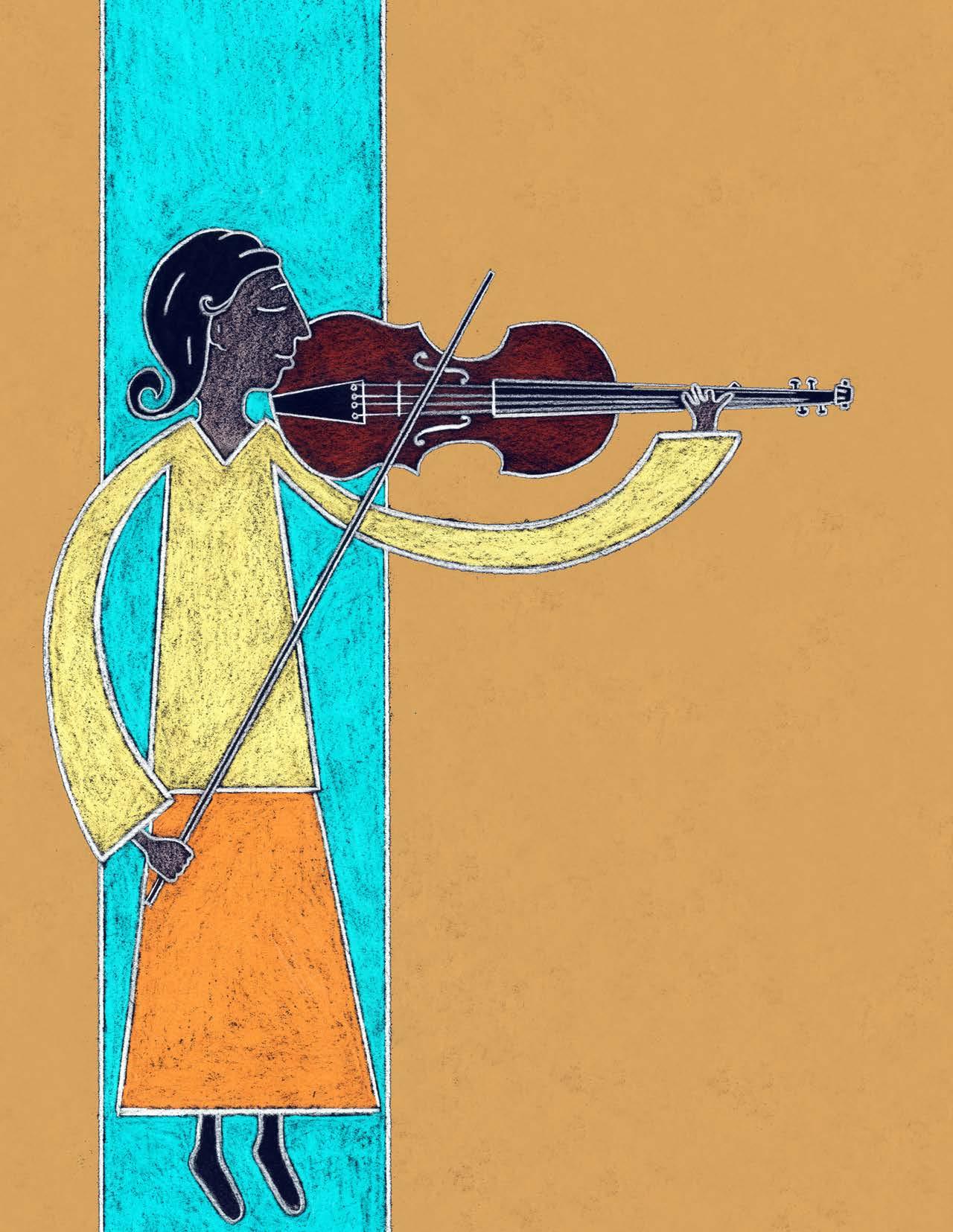 Oregon Music Education Association
Oregon Music Education Association
Oregon MUSIC EDUCATOR Fall
pacificu.edu/as/music
2016 SCHOLARSHIP AUDITIONS
Thursday, Jan. 28
Friday, Jan. 29
Sunday, Feb. 7
Saturday, Feb. 13
Monday, Feb. 15
Monday, Feb. 22
Sunday, March 6
To schedule an audition please call 503-352-2216
DEGREES
Bachelor of Arts in Music
Bachelor of Arts in Music Therapy
Bachelor of Arts in Music Education

Bachelor of Arts in Music
Performance Emphasis
Minor in Music
ENSEMBLES
Symphonic Band
Orchestra
Jazz Band Chamber Singers
Concert Choir
Boxer Rebellion Pep Band Small Chamber Ensembles
503-352-2216 | music@pacificu.edu
OMEA ad Fall 2015_Orchestra focus
Featured
OMEA Dates and Deadlines 2015-2016
Oregon Music Educator Journal
Submit articles for the journal to admin@oregonmusic.org
Fall Submissions Deadline-9/1, Scheduled Mailing Date-10/30 Spring Submissions Deadline-3/1, Scheduled Mailing Date-4/30
Journal Guidelines: oregonmusic.org/files/files/OMEA%20JournalGuidelines.pdf
State Small Ensemble Contest
Registration Deadline-March 14, 2016
Friday, April 29, 2016, Pacific University
OMEA Chair- Dan Judd, dan.judd@bend.k12.or.us
OSAA State Solo Contest
Registration Deadline-March 14, 2016
Saturday, April 30, 2016, Pacific University
OMEA Chair- Tom Muller, tom_muller@ddouglas.k12.or.us
OSAA Solo Administrator- Kyle Stanfield, kyles@osaa.org
OSAA Choir Championships
Registration Deadline- April 16, 2016
May 5-7, 2016, George Fox University
May 05- 2A, 1A and 3A Choir
May 06- 4A and 5A Choir
May 07- 6A Choir
OMEA Chair- Matt Strauser, oregonacda@gmail.com
OSAA Choir Administrator- Molly Hays, mollyh@osaa.org
OSAA Band/Orchestra Championships
Registration Deadline- April-16, 2016
May 11 -14, 2016, Oregon State University
Board- 8:30-3:30, Home Builders Association, 15555 SW Bangy Road, Lake Oswego
May 11- 3A and 4A Band
May 12- String and Full Orchestra
May 13- 2A and 5A Band
May 14- 6A Band
OMEA Chair- Chuck Bolton, tubasat@aol.com
Oregon Music Education Association | PO Box 1235, La Grande, OR 97850 | 541-962-6262 | oregonmusic.org 1
Table of Contents
Volume LXVII #1 October 2015
Articles Advertiser Index
Music Teacher Learning Opportunities 10/9/2015 District IV In-Service
Conference 01/15-17/2016 “Imagine the Possibilities” Eugene Hilton Conference Center 11/01/2015 Conference Registration Begins 01/01/2016 Cut Off for Banquet-Conference Registration Fees Increase All-State Dates 06/01/2015 Audition Materials posted to Website 09/01/2015 HS Online Auditions/ MS & Elementary Recommendations Open 10/01/2015 Auditions/ Recommendations Close 10/01/2015 Auditions Fees Due 10/20/2015 Acceptance Notices Emailed/ All-State Registration Begins 11/10/2015 Student Registration Ends/ All-State Payments Due 12/05/2015 Music Mailed (To students’ directors at school) 01/14/2016 All-State Jazz and Middle School Groups Begin 01/15/2016 All-State High School and Elementary Groups Begin OMEA Board Meetings 09/12/2015 Full Board- 8:30-3:30, Home Builders Association, 15555 SW Bangy Road, Lake Oswego 11/14/2015 Conference Team- Eugene Hilton 01/17/2016 Full Board- 8:30-12:30, Eugene Hilton 05/21/2016 Full
OMEA
Administrator- Cindy Simmons, cindys@osaa.org Pacific University IFC Whitworth ............................... 3 Southern Oregon University .............. 5 University of Portland 6 Yamaha 7 Metropolitan Youth Symphony 8 Central Washington University 9 Org. of American Kodály Educators ...... 14 Oregon State University ................. 15 Music Camps at Wallowa Lake ........... 16 Marine Corps 17 OMEA 2016 Conference 18, 19 Northwest Band Camps 21 Willamette University ................... 23 Eugene Symphony ...................... 24 University of Puget Sound ............... 25 Soundwaves 32 University of Oregon IBC Oregon State University BC Music Makers 2 OMEA Sustaining Members 3 North by Northwest ........................................ Camille Blackburn ............. 4-5 OMEA President Tom Muller 6 Conference Chair Todd Zimbelman 8 Selecting Repertoire for Your Ensemble ..................... Peter J. Hamlin .............. 10-11 Graduate Student Spotlight Naomi Bristow 12-14,20 2016 All-State Conductors .................................. . . . . . . . . . . . . . . . . . . . . . . . . . . . . . . . . 19 I Made It! Chris Leavitt 21-23 Back to School with Books and Storytelling Suzanne Light 24 Orchestra Chair............................................. Dijana Ihas ................. 26-30 Changing Lives One Note at a Time Matthew H. Spieker 31-32
Band/Orchestra
Music Makers
Executive Board
OMEA President
Tom Muller
David Douglas High School tom_muller@ddsd40.org
OMEA President-Elect
Todd Zimbelman West Salem High School rrtz@comcast.net
OMEA 2nd Vice President
Corey Alston Lakeridge High School alstonc@loswego.k12.or.us
OMEA Past President
Tina Bull Oregon State University tina.bull@oregonstate.edu
OMEA Treasurer
David Becker
Retired/Lewis and Clark dbecker@lclark.edu
OMEA Executive Directors
Jim & Jane Howell Board Advisors/No Vote janejim@oregonmusic.org
District Chairs
District 01 Chair
Jane Schrepping Astor k-12 jschrepping@pps.net
District 02 Chair
Rob McGlothin Sandy High School robert.mcglothin@ortrail.k12.or.us
District 03 Chair
Michael McClure Warrenton Grade School mcclurem@whsd.k12.or.us
District 04 Chair
Kelsie Demianew Cummings Elementary kelsie.demianew@gmail.com
District 05 Chair
Luke MacSween Bend High School luke.macsween@bend.k12.or.u
District 06 Chair
Chris Leavitt La Grande High School chris.leavitt@lagrandesd.org
District 07 Chair
Janet Lea North Bay Elementary jlea@nbend.k12.or.us
District 08 Co-Chair
Steve Kessler North Medford High School steve.kessler@medford.k12.or.us
District 08 Co-Chair
Kendra Taylor North Medford High School kendra.taylor@medford.k12.or.us
District 09 Chair
Matthew Fletcher Nyssa MS & HS mfletcher@nyssa.k12.or.us
District 10 Chair
Andrew Arriaga Elkton Charter School Andrew.Arriaga@elkton.k12.or.us
District 11 Chair
Stuart Welsh West Albany High School Stuart.Welsh@albany.k12.or.us
District 12 Chair
Shira Fadeley South Eugene High School shirafadeley@yahoo.com
District 13 Chair
John Donnelly LaSalle High School jdonnelly@lsprep.org
District 14 Chair Laura Arthur Athey Creek Middle School arthurl@wlwv.k12.or.us
District 15 Chair
Mandy Mullett Highland Park Middle School Mandy_Mullett@beaverton.k12.or.us
Area Chairs
Advocacy Chair Jennifer Mohr Colett Fir Grove Elementary oregonmusicadvocacy@gmail.com
Area Chair-Band Jennifer Brooks-Muller David Douglas High School jennifer_muller@ddsd40.org
Area Chair-Choral Will McLean South Salem HS mcleanwm@gmail.com
Area Chair-Orchestra
Dijana Ihas Pacific University dihas@pacificu.edu
Business/Sust Memb Chr
Al Kato Jesuit HS akato98@yahoo.com
Elementary Chair Suzanne Light Meadow View School suzanne.light@bethel.k12.or.us
General Music Chair
Cherie-Anne May Retired camay13@comcast.net
Historian David Becker Retired/Lewis and Clark dbecker@lclark.edu
Membership Chair
Stephen Fulks Stayton HS & MS stephen.fulks@nsantiam.k12.or.us
Small Ensemble Contest Chair Dan Judd Summit High School dan.judd@bend.k12.or.us
Small Schools Chair
Jordan Bemrose Ione Community School jordan.bemrose@ione.k12.or.us
State Solo Contest Chair
Tom Muller
David Douglas High School tom_muller@ddouglas.k12.or.us
Special Board Reps/ Liaisons
CNAfME Representative Fraser Gottlieb University of Oregon fbg@uoregon.edu
OSAA Band/Orch Contest Chr Chuck Bolton Retired tubasat@aol.com
OSAA Band Rep
Jeremy Zander Southridge High School Jeremy_Zander@beaverton.k12.or.us
OSAA Choral Liaison
Christopher Silva
David Douglas High School christopher_silva@ddouglas.k12.or.us
OSAA Choir Contest Chair
Matthew Strauser Retired oregonacda@gmail.com
OMEA Recording Secretary
Laura Arthur Athey Creek Middle School arthurl@wlwv.k12.or.us
NW NAfME Regional President Camille Blackburn NAfME queencamille@gmail.com All-State
AS-HS Wind Ensemble Manager
Jeff Hornick Oregon Episcopal School hornickj@oes.edu
AS-HS Symphonic Band Manager
Michael Burch-Pesses Pacific University michaelbp@pacificu.edu
AS-HS Mens Choir Manager
Kevin Durfee La Grande High School kevin.durfee@lagrandesd.org
AS-HS Womens Choir Co-Manager
Julie Cherry
Leslie Middle School julieannacherry@gmail.com
AS-HS Womens Choir Co-Manager
Will McLean South Salem High School Mclean_William@salkeiz.k12.or.us
AS-HS Orchestra Manager
George Thomson
West Salem High School thomson_ george@salkeiz.k12.or.us
AS-HS Jazz Ensemble Manager
Ben Lawson Redman High School ben.lawson@redmondschools.org
AS MS Honor Band Co-Manager
Ann McBride West Orient Middle School mcbride2@gresham.k12.or.us
AS MS Honor Band Co-Manager
Peter Nilson-Goodin Clear Creek Middle School nilsen@gresham.k12.or.us
AS MS Girls Choir Manager
Megan Perdue Lake Oswego High School megan.perdue@gmail.com
AS MS Boys Choir Manager
David Loney Judson Middle School loney_david@salkeiz.k12.or.us
AS MS Honor Orchestra Manager
Eddy Robinson Pilate Butte & Sky View Middle Schools eddy.robinson@bend.k12.or.us
AS MS Honor Orchestra Assistant
Brenda Simmons High Desert Middle School brenda.simmons@bend.k12.or.us
AS Elementary Choir Co-Manager
John Hillan Lowrie Primary School HillanJ@wlwv.k12.or.us
AS Elementary Choir Co-Manager
Kim Putnam Hazeldale Elementary School musicputnam@gmail.com
All-State Housing Chair
Mary Ann Vidourek Grant Union 1-12 therock@centurytel.net
Transportation
Jennifer Bell McNary High School Bell_Jennifer@salkeiz.k12.or.us
All-State A/V Manager
Stuart Welsh West Albany High School Stuart.Welsh@albany.k12.or.us
All-State Equipment Manager
Nathaniel Irge nirby@roseburg.k12.or.us
All-State Equipment Assistant
Megan Hansen Roseburg High School ilgsen614@gmail.com
All-State Equipment Assistant
Stephen Marshall Oregon State marshste@onid.oregonstate.edu
All-State Booth Manager
Rob McGlothin Sandy High School robert.mcglothin@ortrail.k12.or.us
CNAfME Representative Natalie Marquetta George Fox University
CNAfME Support
Dick Elliot George Fox University
Publishing and Printing
Cover Art & Graphic Design: Bryan Ribelin bryanribelin.com
Printing & Mailing: Shelton Turnbull 3403 W 7th Ave Eugene, OR 97402 stprint.com
Editorial Board: Jim Howell, Jane Howell PO Box 1235 La Grande, OR 97850 janejim@oregonmusic.org 541-962-6262
Oregon Music Educator Journal
Submit articles for the journal to: admin@oregonmusic.org
Fall Submissions
Deadline-9/1
Scheduled Mailing Date-10/30
Spring Submissions
Deadline-3/1
Scheduled Mailing Date-4/30
Journal Guidelines: oregonmusic.org/files/files/ OMEA%20JournalGuidelines.pdf
Oregon Music Education Journals can be found on the OMEA website at: oregonmusic.org
OMEA
The Oregon Music Education Association (OMEA) is a federated state Association of the National Association for Music Education (NAfME), a voluntary, non-proft organization representing all phases of music education in schools, college, universities, and teacher education institutions. Active NAfME/OMEA membership is open to all persons engaged in music teaching or other music educational work.
Membership: musiced.nafme.org/join
Non-member subscriptions are $30 per year; or $10 per issue. Bulk rate postage paid.
2 Oregon O R E G O N ∙ M U S I C ∙ E D U C A T O R ∙ F A L L ∙ 2 0 1 5
OMEA Sustaining Members
2015-2016 Sustaining Members
Barbershop Harmony Society
Mel Knight 14897 SW Osprey Ct. Beaverton, Oregon 97007
Chamber Music Northwest

Kim Morris 522 SW Fifth Ave., Suite 920 Portland, Oregon 97204
Eastman Music Company
Shane Deuel
2158 Pomona Blvd. Pomona, California 91768 EastmanMusicCompany.com
From the Heart School of Singing
Rebecca Fromherz 716 E Ellendale Ave Dallas, Oregon 97338
JW Pepper Wendy McKee 7611 S. 180th St. Kent, Washington 98032 jwpepper.com
Northwest Band Music Camps
Gene Burton 2033 SW Eastwood Gresham, Oregon 97080 nwbandcamps.com
Oregon State University, School of Arts & Communication
Erin Sneller Music - 101 Benton Hall Corvallis, Oregon 097331 liberalarts.oregonstate.edu/music
Pepwear
Claude Hedgepeth 1021 Eastgate Dr. Midlothian, Texas 76065 pepwear.com
Peripole, Inc. Andrew Perry PO BOX 12909 Salem, Oregon 97309-0909 peripole.com
Portland Youth Philharmonic
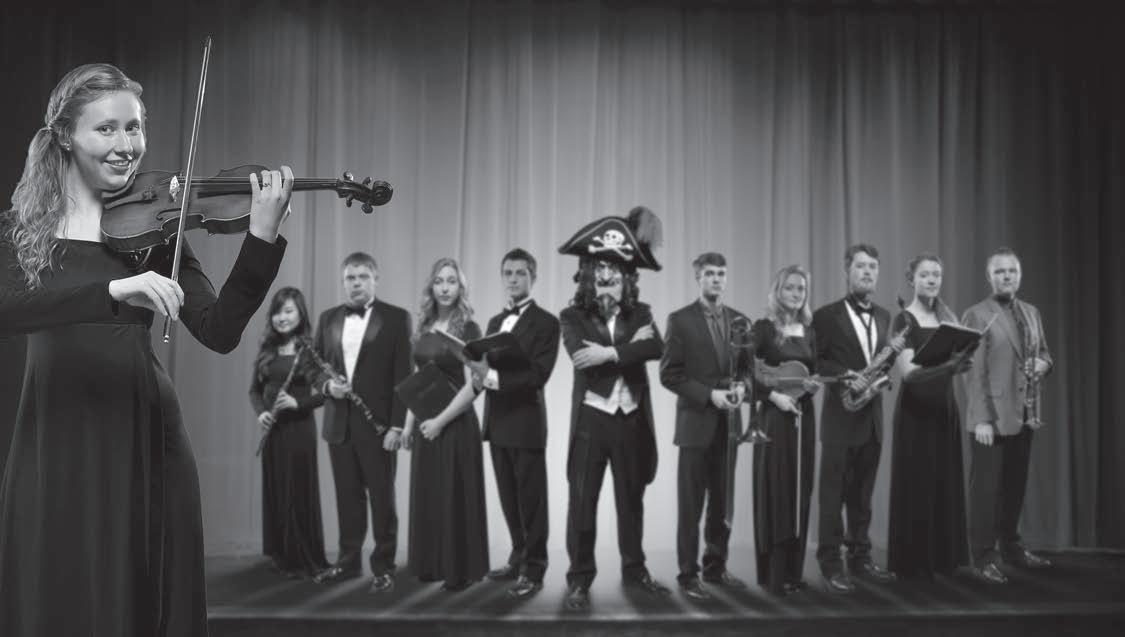
Olivia Kipper 9320 SW Barbur Blvd., Suite 140 Portland, Oregon 97219 portlandyouthphil.org
Soundwaves Recording
Dan & Virginia Canalos 4708 Surfside Drive Huron, Ohio 44839 Soundwaves.org
The Eugene Symphony Mollibeth Cox 115 West 8th Avenue, Suite 115 Eugene, Oregon 97401 eugenesymphony.org
University of Oregon School of Music & Dance
Sara Spicer 1225 University of Oregon Eugene, Oregon 97403 music.uoregon.edu
University of Portland
David De Leyser 5000 N. Willamette Blvd Portland, Oregon 97203 up.edu/music
Wally’s Music Shop
Steve Bond 607 Washington Street Oregon City, Oregon 97045 wallysmusic.com
Willamette Valley Music Company
Charles Kem 484 State St Salem, Oregon 97301 wvmc.net
Yamaha Corporation of America Band & Orchestra Division
Larry Chamberlain 11410 NE 124th St PMB 521 Kirkland, Washington 98034 usa.yamaha.com
Oregon Music Education Association | PO Box 1235, La Grande, OR 97850 | 541-962-6262 | oregonmusic.org 3
Music at Whitworth...telling the bigger story. “Whitworth provides a vibrant setting that allows me to express with the violin what words cannot.” Kendra Apland | Music Ministry & Violin Performance | Hometown: Hood River, Oregon www.whitworth.edu/music | 509.777.3280 | music@whitworth.edu
awards Make Your Nominations for the at oregonmusic.org
North by Northwest
Greetings Fellow NW Music Educators!
Iam looking forward to the next two years as your NAfME NW Division President. While serving in various positions in MENC and now NAfME, I have made lifelong friends. Music teachers are some of the most passionate people I know; they care about what they do and they care about their students. Don’t ever be afraid to take on a leadership position. You will grow, your students will grow because of your broadened perspective, and our organization will continue to grow and move forward with our mission to deliver a quality music education for all.
And so, a brief report of the National Assembly and Hill Day 2015. This year over 200 NAfME delegates from across the country, including over 70 collegiate representatives, took the case for music education to Congress, seeking support for the new ESEA-rewrite (Elementary Secondary Education Act). Many of you contributed to these efforts by sending more than 14,000 letters to your legislators in support of this bipartisan bill.
The “Every Child Achieves Act of 2015” was introduced on the Senate floor on July 7th. The last version of ESEA expired in 2007 under the “No Child Left Behind Act,” leaving an educational directive of outdated policy and ineffective fixes that has hampered public education for more than seven years. After much discussion of over 150 amendments, the Senate passed the “Every Child Achieves Act of 2015” on July 15th by a vote of 81-17. This act defines music and arts as core subjects, addressing the narrowing of the curriculum caused by No Child Left Behind.
The House has passed a much different version of ESEA the “Student Success Act.” As of July 30, a bipartisan committee has been formed to reconcile the two chambers differing versions of the ESEA reauthorization proposals. The NAfME Assistant Executive Director, Chris Woodside, is hopeful an agreement will be reached and Michael Butera, NAfME Executive Director and CEO, stated, “It is our strong hope that a motivated Congress will remain focused on ensuring that music education orchestrating success in the lives of all students throughout America. Music energizes and elevates, it makes schools better, and it creates better employees and citizens, later on in life. We look forward to working with Congress to get a good bill across the finish line.”
For more information on NCLB’s impact on music education, and what NAfME is working to accomplish, check out the archived video footage of NAfME’s recent congressional briefing, “Beyond the Bubbles with Music: The Benefits of a Broader Minded Education”. visit: vimeo.com/132330371
For a more detailed report of the ESEA reauthorization, go to July 17, 2015 Advocacy Groundswell Blog. visit: nafme.org/category/advocacy-groundswell-blog/
I am hopeful all will be resolved before you even read this article, but it could take months. Keep the faith and get involved wherever you can in advocacy efforts for a brighter future for music education in our public schools.
Speaking of public schools, many if not most of us will soon be back in the classroom. No matter how many years we have been teaching, there is always room for improvement. I recently came across an article in Teaching Music from October of 1999, “The Habits of Highly Effective Music Educators.” Of course the ideas in the article are based on Stephen Covey’s highly popular book, “The Seven Habits of Highly Effective People” (1989).
The seven habits described in Covey’s book can be applied to business, home life, personal development and to education. In fact they may be a great template for lesson planning and perhaps even a rubric for student assessments. They most definitely would help with classroom management and discipline. I used the seven habits in training my student leaders last year, and it opened their eyes to better ways of understanding and working with their peers.
Habit #1 – Be Proactive
• Solve problems before they happen
• Anticipate problem areas in the music before the rehearsal
• Have an attractive and functional learning environment for students
• Post a rehearsal order for the day on the board
• Post objectives for the day’s rehearsal on the board
• Set the chairs/stands ahead of time or have a plan for quick setup
Habit #2 – Begin With the End in Mind
• Begin the rehearsal with the finished product in mind
• Allocate the amount of time needed to accomplish goals
• Plan activities/exercises to achieve the desired sound
• Engage students in activities that will build skills necessary for success
• A ssess the amount of progress made and re-plan
Habit #3 – Put First Things First
• Create a list of priorities based on the assessments from habit #2
• Begin rehearsals with a skill the students have mastered to build confidence
• Be sure students understand proper breathing, tone production, tuning, articulation and blend
• Teach fundamentals as a part of every rehearsal
• Be sure you have the skills and information to teach the music to students
Habit #4 – Think Win/Win
• Everyone involved receives a positive result
• Be sure students receive the finest music education possible
4 Oregon O R E G O N ∙ M U S I C ∙ E D U C A T O R ∙ F A L L ∙ 2 0 1 5
• Establish positive relationships among the students and with the teacher
• Give positive reinforcement often
Habit #5 – Seek First to Understand, Then to Be Understood
• Identify different learning styles of students
• Prepare more than one way to teach a concept or skill
• Think about how your rehearsal process works for students
• Be sure to model accurately, especially in the first few minutes
• Consider the following plan for maximizing learning
› First 20 minutes – address the highest learning objective of the day
› Middle 10 minutes – take care of announcements and administrative duties – students can relax briefly
› L ast 10 minutes – review learned concepts
• Don’t take things students do or don’t do personally
Habit #6 – Synergize
• The effect is greater than the sum of the parts
• The conductor and ensemble perform as one
• Everyone takes ownership of the music and their contributions
• Students feel free to make suggestions to improve performance
• Students are free to discuss artistic choices such as dynamics or tempo
Habit #7 – Sharpen the Saw
• If what you are doing isn’t working, do something different
• Consider a different seating arrangement
• Re-evaluate choices of literature
• Bring in a clinician or veteran teacher for another perspective

• Have section rehearsals
• Record your ensemble, video and audio, and evaluate with your students
• Review fundamentals as often as needed
• “Sharpen Your Saw”– Self evaluation
› Attend your state’s in-service conference
› Attend a national in-service conference
› Read and implement articles from Teaching Music and MEJ
› Take a class, go to a workshop, or ask colleagues for help
Online Professional Development!
The Seven Habits contain powerful ideas that can be applied to our music rehearsals and our interactions with our students, and can lead to positive improvements in both. I know you are motivated and enthusiastic, and your efforts will result in well-managed rehearsals in which students will make significant musical progress. I’m looking forward to meeting as many of you as possible during my term as NW Division President. Good luck with your plans for this new school year!
Degrees Offered
Bachelor of Arts in Music
Bachelor of Science in Music
Master of Music in Performance
Minor in Music
Undergraduate Emphasis in Performance and Music Instruction (Education)

Schol ArSh IP AU dItI on S: Saturday, February 6, 2016
Or apply for scholarships online at oca.sou.edu/academic-programs/ music/apply-now Visit

Oregon Music Education Association | PO Box 1235, La Grande, OR 97850 | 541-962-6262 | oregonmusic.org 5
Camille Blackburn
NAfME Northwest Division President
oca.sou.edu/academic-programs/music or call 541-552-6347
NAfME offers this exciting free benefit to members throughout the school year. NAfME members visiting the band, orchestra, chorus, jazz, inovations, guitar, composition, Collegiate and general music networks can get expert advice in answer to their questions.
the forums at www.nafme.org
Got music education questions? Want some expert advice?
Visit
Moving Forward
Welcome back to the 2015-2016 school year! I hope your year is off to a smooth start. If you are brand new to the field, or to Oregon, I welcome you to OMEA. If you are one of our veteran educators, welcome back to yet another year!
It has been a year of change for OMEA. A number of board members have moved onto bigger and better things. One of the most prominent changes in leadership has been the President-Elect position. Please make sure and welcome Todd Zimbelman into his new role as Conference Chair.

OMEA has also put a lot of energy into membership and advocacy. Recently, Stephen Fulks (membership chair) and Jennifer Mohr-Colett (advocacy chair) have put in many hours looking at ways to bolster our membership and have better representation for our programs. The advocacy chairs will be reaching out to the membership for help in their projects, and I know that many of you will answer the call.
I have been encouraged in the past year by the number of positions that are either being renewed or brought back
across the state. We’re not there yet, but our board reports from each district have been positive regarding staffing. We must continue to keep our programs vibrant and visible in our communities for this to continue.
Tom Muller OMEA President
As we move into this school year, please look for ways to be active in your districts. Look for ways to assist your district chairs with in-service opportunities, help with any honor groups or festivals that are going on in your area, or reach out to new teachers to help them get their feet underneath them.
The Oregon Music Education Association is one of the best organizations I have been affiliated with. As I close out my Presidency this year, I will reflect on these last couple of years and I will look for ways to assist your new President in whatever that vision entails.
Located minutes from downtown, the University of Portland combines personal attention with challenging academics in our nationally accredited music program.

Now offering a pre-music education track to prepare you for a Master of Arts in Teaching.

6 Oregon O R E G O N ∙ M U S I C ∙ E D U C A T O R ∙ F A L L ∙ 2 0 1 5
7.5 x 5 Music ad 2015-16 / Choral photo - with dates MUSIC @ UNIVERSITY OF PORTLAND INTIMATE CLASSES. INNOVATIVE PROGRAMS. OUTSTANDING ENSEMBLES.
ENSEMBLES University Singers • Wind Symphony • Orchestra • Women’s Chorale • Jazz Ensemble • Vocal and Instrumental Chamber Music 2016 SCHOLARSHIP AUDITION DATES Monday, February 15 • Saturday, February 20 and 27 FOR MORE INFORMATION up.edu/music UPMusic@up.edu 503.943.7228

Plan Ahead, Charge Ahead!
Ihope your school year is off to an incredible start! As I began my work on the 2016 OMEA Conference “Imagine the Possibilities” this past spring, I quickly realized the countless hours and devotion the conference planning team members, OMEA leaders (district and state-wide), area chairs, group managers, and OMEA administrators put into the entire organization and the conferences. Unless you are involved in the leadership, it’s impossible to explain or understand. I have definitely benefited from the many leaders before me. As I look back now having served on the OMEA board for a very short time, I can say (with great transparency) THANK YOU to all of the past leaders, conference planning committee members, and OMEA administrators.
Preparing and managing a conference is only half of what makes a conference successful. The teachers and students must attend. I would encourage everyone to register for the conference early. Book your Hilton hotel rooms online using our OMEA website and receive the OMEA Member Conference Rate. We will have a number of deadlines that each participating teacher will need to follow closely. These deadlines assure that all of the behind-the-scenes work can be done smoothly and efficiently, and will ensure that everyone on the OMEA planning team can complete their tasks. Please refer to the OMEA website (oregonmusic.org) for a complete list of these deadlines. You will receive regular “e-blasts” from Jim and Jane Howell to remind you of these upcoming deadlines as well. If you are not receiving these “e-blasts,” please update your profile on the NAfME website.
Moving forward, I can only promise to do everything possible to run the best conference imaginable. The planning committee is a talented group of hard working professionals that are committed to making the 2016 conference an incredible event. I can’t thank them enough. The planning team and the OMEA administrators will be working on the conference until the doors are opened in
Todd Zimbelman President-Elect / Conference Chair

January. The sessions, presentations, performing ensembles, speakers, guest conductors, entertainment, and everything else is shaping up quite nicely for the 2016 conference. We had a very large number of session proposals and performance applications with our new online submission process and the committee accepted as many as possible. Thank you to everyone that submitted proposals. Please plan ahead. Get everything in order so you can relax and enjoy the 2016 conference. I know many of you are charging ahead in your classrooms with great determination. Come to the conference to get recharged and enjoy everything that is being prepared for you. If you have any questions, please visit the OMEA website. If you need further assistance, please contact me: zimbelman_todd@salkeiz.k12.or.us.

8 Oregon O R E G O N ∙ M U S I C ∙ E D U C A T O R ∙ F A L L ∙ 2 0 1 5
Downtown Concerts Opening Night
Sunday, November 15,
2015
WILLIAM WHITE,
Director see playmys.org for full season schedule Auditions in January! See conference schedule at: 2016 OMEA Conference oregonmusic.org and on Guide Book at OMEA 2016 Download Guide Book app at: guidebook.com/getit/ JANUARY 14-17, 2016 Eugene Hilton & Conference Center
Arlene Schnitzer Concert Hall, 7:30 pm Edward Elgar, Enigma Variations Pyotr Ilyich Tchaikovsky, 1812 Overture
Interim Music
WE KNOW YOU’VE GOT THE CHOPS AND WE WANT TO HEAR THEM
RESERVE YOUR AUDITION TIME FOR FALL 2016 ADMITTANCE INTO CWU’S MUSIC PROGRAM

January 14 & 15, 2016

Central Washington University
McIntyre Music Building Ellensburg, WA 98926
January 16, 2016

Highline Community College
CWU Higher Education Building 29 2400 S 240th St. Des Moines, WA 98198
For more information, contact: 509-963-1216 To reserve your audition spot, visit: www.cwu.edu/music
CWUAUDITIONS CWU Music-department @cwu_music_dept @cwumusicdept #cwumusic
Selecting Repertoire for Your Ensemble
Selecting appropriate music for performance is one of the most important and challenging responsibilities for all music teachers. Great care should be taken to locate and select quality music no matter the age level of the students. The music that is selected reveals much about the philosophy and values of the music teacher. It is the vehicle through which musicianship is achieved. The selection of appropriate repertoire is therefore crucial in providing an enjoyable experience for students, teaching executive skills, teaching musical concepts, and reaching established learning objectives. It is evident from research, however, that little systematic training is provided during the pre-service years to train teachers in selecting quality music (Bauer, 1990). The goal of this article is to provide some guidelines for the selection process.
Know Your Ensemble
Knowing your ensemble is a critical aspect of selecting appropriate repertoire. First, determine the ensemble’s strengths and weaknesses. These might include articulation, technical facility, musicality, range development, balance/blend, and tone development. Music should be selected to address aspects of music performance that will help the ensemble to grow and improve.
Set Goals
The next step in the process is to set long and short-term goals based on the strengths and weaknesses that were identified. The goals should specify the new skills that the students will gain as a result of studying the repertoire. Learning outcomes should be specific, measurable, and attainable. The clarity with which the goals are then communicated to the students will impact their rate of achievement.
Where to Locate Music
There are many sources available to locate quality music. These include state lists, recommendations from colleagues, publisher materials, listening to recordings, attending concerts, festivals, books, and websites. Crochet (2006) and Howard (2001) found that the top methods used by directors to locate music were listening to recordings, attending live performances, using state lists, and colleague recommendations. When selecting music, it is best to see a score and not rely solely on recordings.
Determining Quality
The quality of the repertoire is one of the most important considerations when selecting music (Apfelstadt, 2000; Bodegraven, 1965; Cundiff & Dykema, 1923; Doran, 1956; Goldman, 1934; Hoffer, 2001; Jones, 1953; Knight, 2001; Kohut, 1963; Kuhn, 1962; Meyer, 1973; Mursell, 1943; Persellin, 2000; Reimer, 1989; Rosene, 1981; Thomas, 1970). Directors must strive to select music of the highest quality. Students deserve to have an aesthetic experience no matter the grade level (Hoffer, 2001; Meyer, 1973; Reimer, 1989).
There are many criteria posed by experts to define quality. Some helpful criteria include the use of a variety of styles, interesting scoring and timbres, historical accuracy and relevance, rhythmic variety, interesting writing, and teachable concepts. Additionally, all the players should have interesting content to play at some point during the
piece. Selections should exhibit variety in orchestration and texture, consistency of articulation and rhythmic notation, and a logical use of musical elements and tempos.
Programming for Your Ensemble Educational Value
Music should be chosen to meet the goals that were established prior to beginning the selection process. Identify compositions that will facilitate the teaching of the specific skills or concepts in an efficient and effective manner.
Knowing the Audience and Purpose of the Performance
When establishing goals and selecting music it is also important to take into consideration the time available for rehearsal, the purpose of the performance, and the expectations of the audience. These are important prerequisites to effectively choosing repertoire. The time between concerts, the availability and type of performance venue, and possible disruptions such as vacations or testing may each alter your choice of repertoire.
It is also necessary to choose music that is appropriate for the specific concert or event at which the ensemble will be performing. Knowing your audience may also guide the type of music that you consider programming. Audience expectations and reactions will differ depending on the setting and purpose of the performance. You might decide to program differently for a music performance assessment than you would for a recruitment trip to your feeder school. It is important to keep the audience engaged and know the function of the performance when programming concerts (Apfelstatdt, 2000; Bollinger, 1979; Dillon-Drass, 2000; Doran, 1956; Gage, 2000; Hoffer, 2001; Holvik, 1970; Knight, 2001; Leonard and House, 1972; Mercer, 1972; Reimer, 1989; Thomas, 1970).
Instrumentation/Scoring
The instrumentation/scoring of the music is another important factor in the selection of repertoire. The size of the ensemble and its instrumentation should be considered carefully so that the music does not call attention to any deficiencies (Hoffer, 2001; Hilliard, 1992; O’Reilly & Williams, 1998). Match the music to the needs of your ensemble. Consider the range of the parts, whether or not uncommon instruments are doubled or cued, how many independent lines are happening at once, and whether or not it is possible to re-score parts to make the music work for your ensemble.
Variety
When programming music for your concerts, variety is important. Select music from different styles and genres. Include music of different historical periods and cultural backgrounds (Bollinger, 1979; Grant and Kohut, 1992; Hoffer, 2001; Leonard and House; 1972; Meyer, 1973; Music Educators National Conference, 1994; Reimer, 1989; Volway, 1987). Music should vary in style, form, emotional content, and composer to provide greater educational experiences (Ables, Hoffer, and Klotman, 1994; Bauer, 1996; DeHoog, 1975; Gelpi, 1984; Grant and Kohut, 1992; Hoffer, 2001; Janzen, 1985; Mayhall, 1994; Ostling, 1979; Persellin, 2000; Volway 1987).
Include a variety of difficulty levels. Every piece doesn’t need to be at the ensemble’s maximum achievement level technically to be of
10 Oregon O R E G O N ∙ M U S I C ∙ E D U C A T O R ∙ F A L L ∙ 2 0 1 5
educational value. It is important to challenge the players, yet be realistic. Reducing technical demands also allows for the ability to perform more music. Whenever it’s possible, arrange the order of the music so that two consecutive pieces are not in the same key. This is sometimes challenging with the limited number of keys used in music written for younger ensembles, but it will help to keep the listener engaged. If needed, use short announcements between pieces to help cleanse the harmonic palate. Even with the need for diversity, the compositions selected should also tie together so that there is a sense of unity within the concert program (Bauer, 1996; Bollinger, 1979; DillonDrass, 2000; Fraedrich, 1997; Gage, 2000; Hoffer, 2001; Ostling, 1978; Williamson, 1992).
Director Considerations
It is also important to assess what you, as the conductor, need to work on. Use the music to continue to learn as a musician and a teacher. It is important to get out of your comfort zone. The music should also be fun and interesting. If you don’t like the music or have time to properly study the score, you will limit the musical achievement of the ensemble.
Student Appeal
The appeal of the music to the students is another factor that may influence music selection. This may be one of the more controversial criteria, but it is important to engage students and to keep them interested in the music that is performed. Keep them involved in the musical decisions that are being made and ask their opinions. Help students to understand the construction of the work through analyzing
References
Abeles, H. F., Hoffer, C. R., & Klotman, R. H. (1994). Foundations of music education (2nd ed.). New York: Schirmer Books.
Apfelstadt, H. (2000). First things first. Music Educators Journal, 87(1). 19-22.
Bauer W.I. (1996). The selection of concert band music by high school band directors. Update: Applications of Research in Music Education, 15(1), 4-9.
Bodegraven, P. (1965). Music education in transition. Music Educators Journal, 51(6). 26-29.
Bollinger, D. E. (1979). Band director’s complete handbook. West Nyack, NY: Parker Publishing.
Crochet, L. S. (2006). Repertoire selection practices of band directors as a function of teaching experience, training, instructional level, and degree of success. (University of Miami) Retrieved from ProQuest Dissertations and Theses (UMI No. 3215250)
Cundiff, H. M., & Dykema, P. W. (1923). School music handbook. Boston: C. C. Birchard and Co. DeHoog, H.W. (1975). Developing musicianship in the school rehearsal based on the study and analysis of representative musical forms. (Unpublished doctoral dissertation). Columbia University, New York.
Dillon-Drass, J. (2000). What the teacher does is what the students get. Florida Music Director, 53(8), 9-11.
Doran, J. L. (1956). A question of taste in high school band music. Music Educators Journal, 42(6). 55-58.
Fraedrich, E. (1997). The art of elementary band directing. Fort Lauderdale, FL: Meredith Music Publications.
Gage, S. L. (2000). The importance of repertoire selection for the band director. National Band Association Journal, 41(2), 11-14.
Gelpi, L. R. (1984). College wind band programming: A suggested curriculum for undergraduate training
Unpublished doc toral dissertation, University of Northern Colorado, Greeley, CO.
Goldman, E. F. (1934). Band betterment. New York: Carl Fischer.
Grant, J. W., & Kohut, D. L. (1992). Performance teachers for the future. Music Educators Journal, 79(2), 35-36, 50, 64.
Hilliard, Q. C. (1992). Choosing literature for young bands. The Instrumentalist, 46(6), 11-13.
Hoffer, C. R. (2001). Teaching music in the secondary schools (5th ed.). Belmont, CA: Wadsworth.
Holvik, K. M. (1970). An emerging band repertory: A survey of the members of the College Band Directors National Association. Journal of Band Research, 6(2), 19-24.
Peter J. Hamlin, Ph.D. Assistant Professor of Music Education Gonzaga University
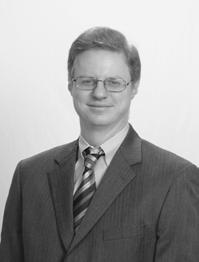
its structure. These are ways to keep students interested and motivated.
Summary
Music selected for study should broaden the musical experience of students. It should also provide students with opportunities to make emotional connections to the repertoire. Repertoire that is selected should have educational value and teach specific skills or concepts that are developmentally appropriate for the ensemble.
The time spent making music with students is limited. Therefore, it is crucial to engage students with the performance of quality music. Allow students the opportunity to contribute and contemplate musical decisions that are made, allowing rehearsals to become more student centered.
Repertoire selection is one of the most important aspects of being a music teacher. Take time to research and explore the repertoire. Music cannot be selected if you don’t know that it is out there. The selection of the right music will create rewarding experiences for the students, audiences, and you. Make the most of the time you have with your students.
Howard, R. L. (2001) Repertoire selection practices and the development of a core repertoire for the middle school concert band. (Doctoral dissertation, University of Florida, 2001).
Janzen, E. A. (1985). Band director’s survival guide: Planning and conducting the successful school band program. West Nyack, NY: Parker Publishing.
Jones, L. B. (1953). The challenge to the college band director. Music Educators Journal, 39(3). 24-25.
Kirchhoff, C. (1993). Literature and musicianship. In J. L. Casey (ed.), Teaching techniques and insights for instrumental music educators (2nd ed.) (p. 36). Chicago: GIA Publications.
Knight, J. (2001). A gathering of composers for middle school band. The Instrumentalist, 55(12), 14-20.
Kohut, D. (1963). Aesthetics and music evaluation: Separating the wheat from the chaff. The Instrumentalist, 18(4), 57-59.
Kuhn, W. E. (1962). Instrumental music. Boston: Allyn and Bacon.
Leonhard, C., & House, R. W. (1972). Foundations and principles of music education. New York: McGraw-Hill. Mayhall, B. (1994). The quest for high quality repertoire. Choral Journal, 35(2), 9-15.
Mercer, R. J. (1972). Is the score the curriculum - or more? Music Educators Journal, 58(6), 51-53.
Meyer, L. B. (1973). Music - the arts and ideas: patterns and predictions. Chicago: University of Chicago Press.
MurselL, J. L. (1943). Music in the American schools. New York: Silver Burdett.
MENC, The National Association for Music Education. (1994). The school music program: A new vision. Reston, VA: MENC, The National Association for Music Education.
O’Reilly, J., & Williams, M. (1998). Standards for judging young band music. The Instrumentalist, 52(12), 12-15. Ostling, A. E. (1978). An evaluation of compositions for wind band according to specific criteria of serious artistic merit. (Doctoral dissertation, The University of Iowa, 1978).
Ostling, A. (1979). College band repertoire. The Instrumentalist, 33(12), 20-22.
Persellin, D. (2000). The importance of high quality literature. Music Educators Journal, 87(1), 17-18. Reimer, B. (1989). A philosophy of music education (2nd ed.). Englewood Cliffs, NJ: Prentice-Hall. Rosene, P. (1981). Why not purchase quality music for your bands? The Instrumentalist, 35(6), 96.
Thomas, R. B. (1970). Rethinking the curriculum. Music Educators Journal, 56(6). 66-69.
Volway, K. B. (1987). A study to locate band literature that corresponds with historical styles. (Unpublished master’s thesis). Western Washington University, Bellingham, WA. Williamson, J. F. (1992). The music selection process. B
Oregon Music Education Association | PO Box 1235, La Grande, OR 97850 | 541-962-6262 | oregonmusic.org 11
Graduate Student Spotlight
Access to String Instruction in Oregon Public High School
Abstract:
The purpose of this study was to determine what percentage of Oregon high schools had an orchestra during the 2014-15 school year. It also examined school size (total student population), school location (city, suburb, town, or rural), socioeconomic status (SES) as determined by percentage of students eligible for free and reduced lunch, and percentage of minority students as possible predictors of whether or not a school had an orchestra.
A list of all public high schools in Oregon was obtained from the National Center for Education Statistics (NCES) website. Data on predictor variables (school size, location, SES, and percentage minority) were also obtained from NCES. Each high school was contacted by phone to determine whether or not they had an orchestra. “Orchestra” was defined as an ensemble made up primarily of string instruments such as violin, viola, cello, and string bass. Of 246 public high schools in Oregon, 53 of them had orchestras.
Data were analyzed using logistic regression. School size was found to be a significant predictor of whether or not a school had an orchestra: large schools were more likely to have orchestras than small schools. School location, SES, and percentage of minority students were not found to be significant predictors of whether a school had an orchestra.
The decline of public school orchestra programs in the United States has been of concern to music educators since at least the 1940s (Wright, 1941; Waller, 1942). In our current era, two broad areas of difficulty are apparent. Although the vast majority of American public schools offer some form of music education, decline in numbers of string education programs continues. This is especially concerning when compared to rising or stable numbers of programs available in choir or band (Leonhard, 1991). There is also indication that, where string programs exist, enrollment continues to rise (Gillespie & Hamann, 1998), suggesting that the issue is not student demand for orchestra programs, but the availability of these programs to students.
The second area of concern deals with the question of which students have access to string education. Although it has long been known that students at small schools are less likely to have access to string instruction than students at large schools (Leonhard, 1991; Smith, 1997), other, more troubling inequities have also been found. The literature indicates that minority students, especially Blacks and Hispanics, are significantly underrepresented in public school music ensembles as well as professional orchestras (DeLorenzo, 2012) as are students from a low socioeconomic background (Elpus & Abril, 2011) and English Language Learners (Lorah, Sanders & Morrison, 2014). Conversely, white students and students from a high socioeconomic background are significantly overrepresented when compared to the
demographic makeup of the American student population as a whole (Elpus & Abril, 2011).
There are many possible explanations for this phenomenon: minority and low SES students may not have access to string education programs, they may not find these programs relevant or of interest, they may self select out of these programs, or there may be other barriers to their entry or success in orchestra, such as availability or affordability of instruments. In any case, research indicates that the problems of equity that public education experiences as a whole are even more apparent when it comes to access to music education and that orchestra programs in particular display a troubling disparity in terms of the range of students that they serve.
A Historical Perspective
Wright (1941) and Waller (1942) debated the issue of declining numbers of school orchestras, possible causes, and solutions. The phenomenon of school orchestras disappearing, especially in smaller schools, was already apparent. Causes given included the rise of the band movement, lack of funding in smaller school districts, lack of instruments and materials, lack of adequate training for string teachers to succeed in a public school setting, and a prevailing belief that only a small minority of students have the requisite talent to play in a school orchestra.
A study by the National Education Association (1963) found that, though the vast majority of American public schools offered some sort of music education, and increases were observed both in student enrollments and class time allotted to music, smaller districts suffered inequities in terms of whether music was offered, time allotted, and equipment available. It was also found that, especially in secondary school performing ensembles, music courses were geared towards students who could perform rather than offering opportunities for every student to study music.
Leonhard (1991) made comparisons to the 1963 study and found that though the overall percentage of schools offering music had increased, when the data were examined more closely, inequities between small and large schools were apparent. Also, between 1962 and 1989, time allotted for music had decreased, and this decrease was more pronounced in small schools. Leonhard also examined school music offerings by type. He found that, in elementary schools, all types of instrumental instruction had decreased, but the greatest decrease occurred in string instruction (roughly 60% in 1962, roughly 35% in 1989). The findings were similar in secondary schools where Leonhard found increasing percentages of schools offering choir, stable numbers for band, but severe decreases for orchestra programs. Between 1962 and 1989 middle school orchestra offerings had decreased from 67%
12 Oregon O R E G O N ∙ M U S I C ∙ E D U C A T O R ∙ F A L L ∙ 2 0 1 5
to 17% and high school orchestra offerings had decreased from 70% to 32%.
The National Center for Education Statistics produced a study in 1995 which revealed that, though the number of public schools offering music had remained relatively stable at 97%, inequities in availability and quality of music education were found depending on geographical location. For example, the northeastern part of the United States was most likely to have music classes taught by a music specialist, whereas the western part of the country was least likely.
Corresponding studies by the US Department of Education in 2000 and 2010 showed that, though percentage of schools offering some sort of music education had remained relatively stable at 94% (a 3% decrease from the NCES 1995 study), the availability and quality of music education decreased as the poverty level of the school (determined by percentage of students eligible for free and reduced lunch) increased.
Regarding string music education specifically, Gillespie and Hamann (1998) found that, though numbers of students enrolling in orchestra were increasing, the number of orchestra teachers was not. They also found that the vast majority of orchestra teachers were white as were the majority of orchestra students. Suburban schools were the most likely to have orchestras, followed by urban districts; rural districts were the least likely to have school orchestra programs.
Smith (1997) studied access to string education in American public schools and found disturbing results in the number of string programs available. She also found inequities in terms of school size, geographic location, and socioeconomic status. Smith found that, “Although the percentage of districts … offering string instruction… is approximately the same as… the 1992 NEA study, a different picture is presented when the findings are broken down by school type… These figures suggest that the number of school districts offering strings continued to decline… from 1989 to 1994” (pp. 660-661).

Smith examined the percentages of string programs available by school level and geographic location. Access to string instruction in elementary school ranged from 2.7% in the west to 26.5% in the east, with a nationwide average of 11.4%. Access to string instruction in middle school ranged from 4.7% in the west to 25% in the east, with a nationwide average of 12.5%. Access to string instruction in high schools ranged from 6.3% in the southwest to 24.5% in the east, with a nationwide average of 12.8%. In addition, the Northwest MENC division (Oregon, Washington, Idaho, Alaska, Montana, and Wyoming) had the lowest access to string education. In 1997 the state of Oregon offered string education in only 9.6% of school districts.
String programs were most likely to be offered in districts near a large city, and least likely to be offered in rural areas. Socioeconomic status (SES) was the strongest predictor of access to string education in elementary schools. SES and school size were the strongest predictors
for secondary schools. Overall, low SES schools were the least likely to have string instruction, regardless of school size or location. Smith concluded that, “Although it was found that access is very limited in many areas of the country, the findings related to socioeconomic level are particularly disturbing, because they point out that inequality of access exists among the socioeconomic levels” (p. 661).
Issues of Inequity Today
Several more recent studies have examined the literature to reveal inequities in access to music education and ensemble participation, especially as regards race and socioeconomic status. Frierson-Campbell (2007) examined NCES data and found that access to music education in American public schools appeared fairly equitable, with approximately 90% of schools offering some sort of music. However, when examined more closely it was found that access to music education was much more limited for schools in urban or rural areas and also in schools with high minority enrollment and/or low SES. In addition, certain districts, especially those in high minority, low SES, urban settings had much lower rates of access. For example, only 20-40% of Baltimore secondary schools offered instrumental instruction and only 40% of Detroit secondary schools offered any kind of music instruction.
Quality of musical offerings was also found to decrease in relation to school location (especially in urban schools), SES, and percentage of minority enrollment in schools. Quality was examined in terms of time allotted to music instruction, qualifications of music teachers, facilities and equipment available. Frierson-Campbell (2007) also concluded that the inequities usually found in small schools versus large schools were overtaken by issues of SES in large urban schools. Although large, wealthy suburban schools were likely to have access to quality music instruction, large, poor urban schools were not.
Elpus and Abril (2011) conducted a study to find a demographic profile of high school choir, band, and orchestra students in the United States. They found that “certain groups of students, including those who are male, English language learners, Hispanic, children of parents holding a high school diploma or less, and in the lowest SES quartile, were significantly underrepresented in music programs across the United States” (p. 128). White students, high SES students, native English speakers, students whose parents were highly educated, and students who were high academic achievers were found to be overrepresented in high school music ensembles.
Further studies in 2012 and 2014 also examined the demographic profile of school music ensembles. De Lorenzo (2012) examined the low numbers of Black and Latino musicians in professional orchestras in the US and their corresponding under-representation in school music
Continued on page 14
Oregon Music Education Association | PO Box 1235, La Grande, OR 97850 | 541-962-6262 | oregonmusic.org 13 Naomi
Research
Bristow Collegiate
Oregon State University
Graduate Student Spotlight continued...
ensembles. He suggests that SES is a powerful predictor of access to music education but that it may not be the only important factor. Selfconcept of students in terms of “who takes orchestra” and the cultural sensitivity of music teachers could also be at play. Lorah, Sanders, and Morrison (2014) studied the relationship between English Language Learners (ELL) status and ensemble participation. They found that ELL were significantly less likely to participate in music ensembles, but when they controlled for socioeconomic status, no significant difference was found. They concluded that SES, not language status, was the primary barrier to participation.
Need for Study
Previous research has shown two troubling trends in access to string education in American public schools. First, numbers of schools offering string education have declined severely from about 60% in 1962 (Leonhard) to about 12% in 1997 (Smith). Second, inequities exist in terms of which students have access to string education: small schools, rural and urban schools, schools serving a high percentage of minority students and schools serving a high percentage of low SES students are the least likely to have string instruction. In addition, it appears that, even where string instruction is available, minority students
and low SES students participate at much lower numbers than their white, higher SES counterparts: the demographic makeup of our string education programs, where they do exist, does not closely represent the demographic makeup of American public school students as a whole (Elpus & Abril, 2011).
Although many studies have examined the state of music education in American public schools, few studies have looked specifically at the area of string instruction. This study provides a starting point for understanding the state of string instruction in Oregon high schools in 2015. It provides a baseline for comparison in terms of the number of Oregon high schools that had orchestras in the 2014-15 school year. Additionally, it examines how school size, school location, percentage of minority students, and percentage of low SES students related to access to string education in Oregon public high schools.
Research Questions
The purpose of this study was to address the following questions:
1. What percentage of Oregonian high schools offer string instruction in 2015?
2. What relationship exists between school size and access to string education?
Continued on page 20

14 Oregon O R E G O N ∙ M U S I C ∙ E D U C A T O R ∙ F A L L ∙ 2 0 1 5
COLLEGE OF LIBERAL ARTS
SCHOOL OF ARTS AND COMM UNICATION
Music Scholarships
2016-2017 Music Scholarship
Auditions
February 17, 2016
Grant High School
Portland
February 20, 2016
Benton Hall, OSU Corvallis
Instrumental Music Faculty
Dr. Marlan Carlson, Music Director, Corvallis-OSU Symphony
Dr. Christopher Chapman, Director of Bands
Dana Biggs, Director of Athletic Bands, Associate Director of Bands
Dr. Robert Brudvig, Director of Percussion Studies
Dr. Jason Gossett, Instrumental Music Education
Dr. Jill Pauls, flute
Fred Korman, oboe
Carol Robe, clarinet
Ann Kosanovic-Brown, bassoon
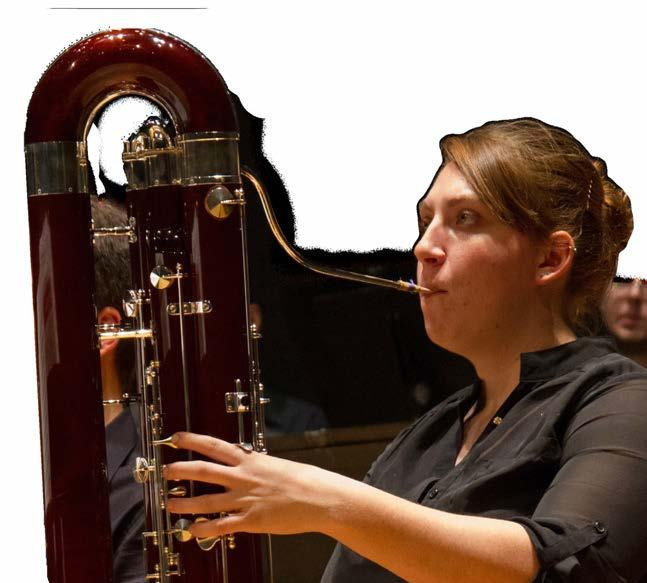
Lawrence Johnson, horn
Jay Chen, trumpet
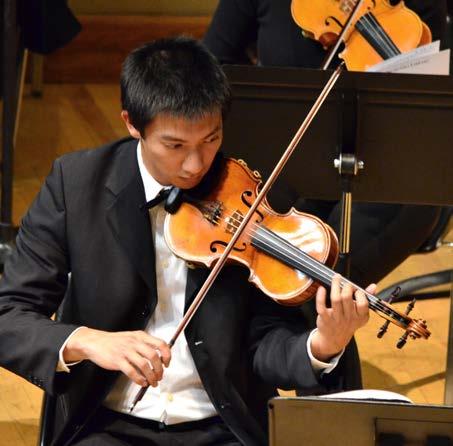
Carson Keeble, trombone

JáTtik Clark, tuba/euphonium
Isaac Andrew, tuba
Jessica Lambert, violin
Ann Grabe, cello
Richard Meyn, bass
OSU Bands 200 Benton Hall Corvallis OR 97331
Oregon State University is an equal opportunity, affirmative action institution committed to cultural diversity and compliance with the Americans with Disabilities Act.
2016-2017
Repertoire may include:
Symphony #9 by Gustav Mahler
The Woman without a Shadow Suite by Richard Strauss
Symphony for Band by Paul Hindemith
OSU Music 101 Benton Hall Corvallis OR 97331 bands.oregonstate.edu liberalarts.oregonstate.edu/music
Concerto for Clarinet and Wind Ensemble by David Maslanka
Music Camps @ Wallowa Lake

Summer Music Camps for Brass and Woodwind Players
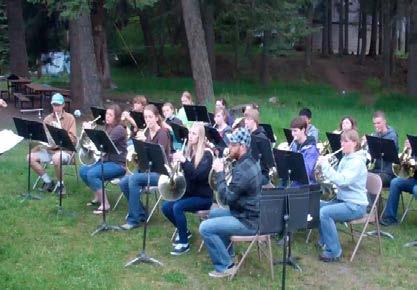
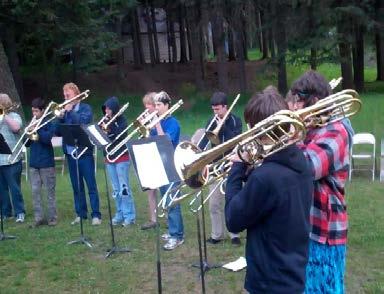
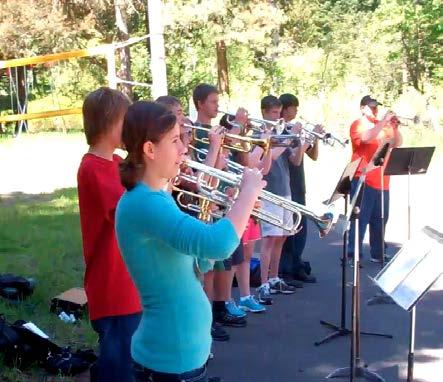
Nowhere will you find a better Brass or Woodwind camp for your middle and high school students! These camps offer a unique experience and intense instruction from members of the Northwest’s professional orchestras. Camp includes student performances and FUN in the heart of the Wallowa Mountains.
Brass @ Wallowa Lake

June 19 - 25, 2016
$470 per camper

Woodwinds @ Wallowa Lake
July 17 - 23, 2016
$495 per camper
A day at Camp includes:
Master Classes
Music Theory
Music History
Mixed Ensemble
Supervised individual practice
Rhythm through movement
Recreation & Activities
French Horn
Two-Camp Special attend BOTH camps for $795 This offer is good for French horns only!
Visit our website: musiccampsatwallowalake.com
Great food! Scholarships
Music Camps @ Wallowa Lake P.O. Box 636 La Grande, OR 97850 Woodwind Camp Phone: 541-663-0326



Camp

Email: birnbaum@oregonwireless.net Brass
Phone: 778-867-0353 (International.Call.email.preferred) Email: hilarykovalchik@gmail.com
available
Music

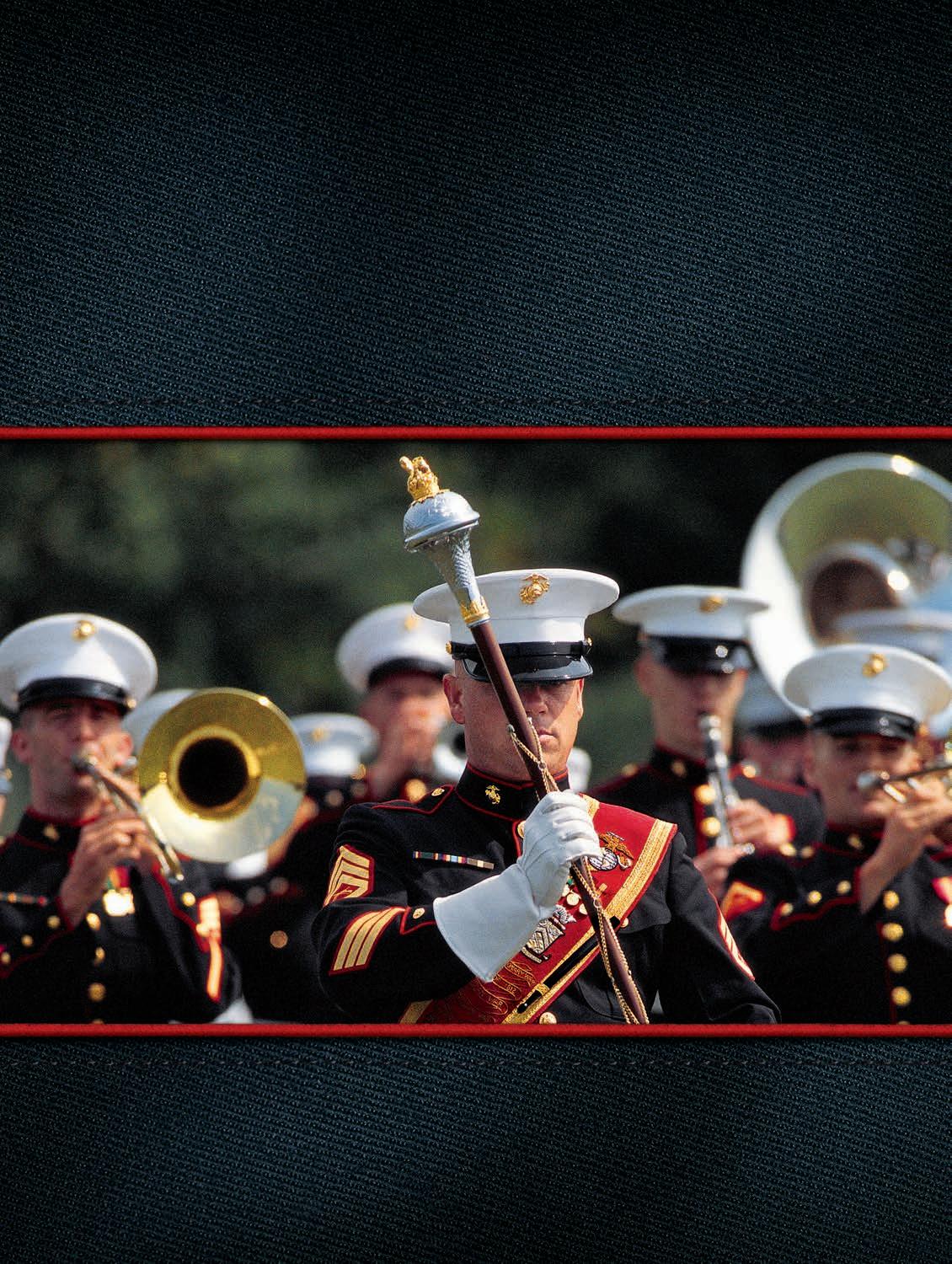
Music that inspires the country q Service that protects it
Enlistment Option Program..There are few truly great career options; serving as a Marine Corps Musician is one of them. If you have what it takes to become both a Marine and a Marine Musician, you will play at some of the world’s most honored events. Precision, discipline and honor will be represented in every note you play. As a Marine, you will distinguish yourself from the rest. To schedule an audition, please call (503)326-3017. MEOP_4C_Ad_7.5x10_2015.indd 1 8/4/15 3:41 PM

Imagine the Possibilities 2016 Conference JANUARY 14-17, 2016 Eugene Hilton & Conference Center Oregon Music Education Association
OMEA Conference
See conference schedule at oregonmusic.org & on Guide Book at OMEA 2016
Download Guide Book app at guidebook.com/getit/
Robert Duke | Keynote Speaker
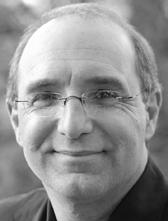
Robert Duke is the Marlene and Morton Meyerson Centennial Professor and Head of Music and Human Learning at The University of Texas at Austin, where he is University Distinguished Teaching Professor, Elizabeth Shatto Massey Distinguished Fellow in Teacher Education, and Director of the Center for Music Learning. He is also directs the psychology of learning program at the Colburn Conservatory of Music in Los Angeles. The most recent recipient of UT’s Friar Centennial Teaching Fellowship, Dr. Duke has directed national research efforts under the sponsorship of such organizations as the National Piano Foundation and the International Suzuki Institute.
Banquet Entertainment
Rhythm & Brass
All-State Conductors
Elementary MS Band
MS Boy’s Choir
MS Girl’s Choir
MS Orchestra
HS Jazz
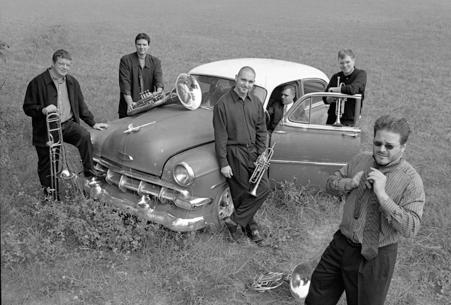
HS Mens’ Choir
HS Womens’ Choir
HS Orchestra
HS Symphonic Band
HS Wind Ensemble
Ken Berg
Gillian MacKay
Richard Nace

Therees Hibbard
Stephen Benham
John Gunther
Kevin Fenton
Edith Copley
David Commanday
Marcellus Brown
Allan McMurray
To learn more about the All-State Conductors visit the OMEA homepage oregonmusic.org.
Honor the People Who Have Influenced You
Make Your Nominations for the
It is time to think of your heroes in music education and try to help them achieve the recognition they deserve! If there is someone you really want to recognize fill out the application for the awards committee to review. This is your chance to honor the people who have influenced you.
Accepting applications for:
Excellence in Elementary Music Education
Exemplary Service to Music Education
Outstanding Contributor
Outstanding Administrator
John C. McManus Distinguished Teacher
Outstanding Music Educator
Get your nomination forms at: oregonmusic.org/awards-apps.html
Send nominations to:
Awards Committee Chair- Tina Bull tinamariebull@gmail.com
Nomination Due Date: December 1st
Oregon Music Education Association | PO Box 1235, La Grande, OR 97850 | 541-962-6262 | oregonmusic.org 19
awards
oregonmusic.org
at
Student Spotlight continued...
3. What relationship exists between school location (city, suburb, town, or rural) and access to string education?
4. What relationship exists between percentage of minority students and access to string education?
5. What relationship exists between percentage of low SES students and access to string education?
Definitions
For the purposes of this study, access to string instruction was defined as whether or not a high school had an orchestra in the 2014-15 school year. “Orchestra” was defined as an ensemble primarily composed of string instruments, such as a string orchestra, full orchestra, or other string based ensembles. Mixed ensembles that may or may not include string instruments and where the primary emphasis was not on string instruction (such as bands, mariachi groups, or other mixed ensembles) were not counted as orchestras.
Socioeconomic Status (SES) was measured by the percentage of students at each school who qualify for free and reduced lunch. Percentage of minority students was determined by dividing the number of students who did not identify as “white” by the total student population. School size was measured by total number of students enrolled. School location was divided into the following categories: city, suburb, town, or rural; as reported by the schools to the NCES.
Results
Of 246 Oregon public high schools, 53 (21.5%) had orchestra in the 2014-15 school year. School size was a significant predictor; large schools were more likely to have an orchestra than small schools. In this study, school location, SES, and percentage of minority students were not found to be significant predictors of whether or not a school had an orchestra. These results were consistent with previous research that found school size to be a dependable predictor of access to string instruction. However, the results were not consistent with previous research that found inequities in access to string education in relation to school location, SES, and percentage of minority students.
Discussion – Strengths and Limitations
A strength of the current study is that it was a census of Oregon high schools rather than a representative sample. Limitations of the study include the fact that some high schools may have answered incorrectly as to whether or not they had an orchestra and/or human error may have resulted in data being recorded incorrectly. The accuracy of the data is also limited by the accuracy of information collected by NCES. In addition, the current study only examines high schools and does not include elementary and middle schools, so it presents and incomplete picture of access to string instruction in Oregon in 2015.
Conclusion
Issues of access to string education and equity in string education are important not only to the students who would benefit from this type
of education and to the cause of equity in public education in general and music education in particular, but also to those who care about the vitality of the symphony orchestra as an American and international art form. More detailed study may help us to determine what can be done to expand the reach of string education in America, what can be done to create more equity in our orchestral programs, and how we can contribute to the future health and growth of orchestral education in particular as well as music education as a whole.
References
Carey, N. L. (1995), Arts education in public elementary and secondary schools, National Center for Education Statistics.
DeLorenzo, L. C. (2012) Missing faces from the orchestra. Music Educators Journal, 98(4), 39-46 . doi:10.1177/0027432112443263
Elpus, K., Abril, CR. (2011) High school music ensemble students in the United States: a demographic profile. Journal Of Research In Music Education,59(2), pp.128-145. doi:10.1177/0022429411405207
Frierson-Campbell, C. (2007). Without the ‘ism: thoughts about equity and social justice in music education. Music Education Research, 9(2), 255-265.
Gillespie, R., & Hamann, D. (1998). The status of orchestra programs in the public schools. Journal of Research in Music Education, 46(1), 75-86.
Kleiner, B., Porch, R., Farris, E., & Burns, S. (2012). Arts Education in Public Elementary and Secondary Schools, 1999-2000 and 2009-2010. US Department of Education, Office of Educational Research and Improvement.
Lambert, S. M. (1963), Music an art in the public schools, Art Education,16(9), 5-14.
Lorah, J., Sanders, E., Morrison, S.J. (2014) The relationship between English language learner status and music ensemble participation. Journal Of Research In Music Education, 62(3), 234-244. doi:10.1177/0022429414542301
Leonhard, C. (1991). The status of arts education in American public schools : report on a survey conducted by the National Arts Education Research Center at the University of Illinois.
Smith, C. (1997). Access to string instruction in American public schools, Journal of Research in Music Education, 45 (4), 650-662.
Waller, G. R. (1942) New era for school orchestra. Music Educators Journal, 28(3), 32-33.
Wright, W. B. (1941) Let’s stop mourning for the orchestras. Music Educators Journal, 27(4),15-16.
For more information contact:
Naomi Bristow
bristona@onid.oregonstate.edu
20 Oregon O R E G O N ∙ M U S I C ∙ E D U C A T O R ∙ F A L L ∙ 2 0 1 5
See conference schedule at: 2016 OMEA Conference oregonmusic.org and on Guide Book at OMEA 2016 Download Guide Book app at: guidebook.com/getit/ JANUARY 14-17, 2016 Eugene Hilton & Conference Center
Graduate
I Made It!
Imade it! Fifty percent of new teachers leave the profession within the first five years of teaching. As I began my sixth year of teaching I realized that I had not become the most common teaching statistic. I would like to share some of my personal experiences and highlight the things that helped me stick it out. I also want to state that this is what helped me. Each of us teach in different school districts, in different locations around the state, with different students, parents, administrative teams and opportunities. What worked for me may not work for you.
My story
I took over teaching at my alma mater, teaching in the same program I went through. This had some clear advantages, as I knew how the program worked and the inherent value system was very much the same as my own. The biggest challenge I had was a lack of confidence stemming from a lack of knowledge. My job started as a half time position where I, for the first two years, felt I had lots of time. When I began my third year however, I was split between my high school program and my own middle school feeder. This created both additional advantages and challenges. My schedule was dictated by three other schedules: the self-contained 6th grade, the 7th and 8th grade schedule of the middle school, and the high school. This required additional travel time not supplied by the district but allowed me to arrange and keep an early bird Jazz class that allowed more high school students to stay in the program.
My program is seeing record enrollment (compared to the last 10-15 years). Students are getting better instruction as I am developing my methods of assessment. In my five years of teaching I have had some ups and downs, things that worked for me and some that did not. I am going to describe each year as a summary of some journal entries that I made throughout that year. They are only representations of my failures and successes during my first five years. If you are a new teacher I hope I might shed some light on the issues you might be dealing with; if you are a veteran teacher, the stories may bring back personal memories of your own blunders and successes.
First year teaching (half time)
I like to look back on this year as “Ignorance is bliss”. I started my teaching career taking the reins from my own high school band director, Jim Howell. His program, while small, was a well oiled machine. I did not have to do much. Students just did what they were supposed to do. The band parents handled meetings, drum majors handled teaching marching techniques and I just worked the music. Wow, bliss. I picked my favorite tunes from college and high school that I could still remember, did light score study on them, and ran rehearsals
Continued on page 22
Northwest Band Camps , Inc. Music and a lot More!

Website : www.nwbandcamps.com
Camps include group instruction in Small Ensembles, Jazz Band and Concert Band. All performance groups will be led by experienced Middle School, High School & College directors. FOR STUDENTS ENTERING GRADES 6 — 11
Dates for 2016
1st Camp - June 19 - 25
2 nd Camp June 26 - July 2

For application brochures & more information contact:
James Douglas , executive director Northwest Band Camps, Inc. PO Box


1611, Corvallis, OR 97339
Easy Payment Option: With the Easy Payment Option, you register with a $200 deposit, and then the balance of your account is paid automatically in 4 equal, easy payments from your credit card.
Oregon Music Education Association | PO Box 1235, La Grande, OR 97850 | 541-962-6262 | oregonmusic.org 21
Chris Leavitt
District 6 Chair, La Grande High School
I Made It! continued...
completely unaware of the issues my bands were facing. I never even considered whether the music was suitable for the band.
My first groups had many problems that could have been fixed by having a warm-up method. My warm-ups consisted of having the students play a Bb… telling them to tune… and telling them, “Okay, let’s go.” There was no meat in the process of my warm-ups and I paid for it the following years. It was during this year that my principal, the guy who hired me, gave me all the support I needed. In a manner of speaking, I was an extension of his ego. My success translated into his success. Aside from an overwhelming lack of confidence, I really felt like I could do anything. I can sum up my first year of teaching with these words: You can’t fix what you can’t hear or see or feel. You cannot know what to see, hear, or feel without experience. And experience is what I lacked.
Second year teaching (half time)
Okay, I did this once before AND I SURVIVED. I can do this! I did a better job preparing a syllabus, having expectations and understanding how to run a rehearsal. I found that this was the year I had my eyes “opened.” I found lots of holes in my education and I felt I had not been prepared well for the job I was doing. I had more personal issues with students than I had the previous year. An administrative change meant that I was no longer the “golden child” and suddenly I had to have every event, trip, and performance approved. I had a bigger program this year as well. More students meant less time to work with each student individually. It was during this year that I first experienced burnout, sometime in mid-February, when I was in the middle of preparing seven groups for concerts, traveling with two of them and trying to prepare for our district contest. Those late nights got to me, especially knowing that I had someone waiting for me to come home. I began to ask myself, “Why am I doing this?” My bands were not getting better. In fact I thought that this group was worse than last year, and those were Jim Howell’s kids. Wow, maybe teaching is not for me after all. Maybe I could get him to sub and fix my problems for me, but then it would be Jim’s band and not mine...
Third year (first full time)
Now I am the middle and high school band teacher. Where did all my time go?!? Nights were spent scrambling to prepare for the next day, trying to prepare two classrooms with the materials each one needed for the day’s events. I went from having 55 to 150 students per day. This was my first year teaching beginning band and I learned how little I had retained from my methods classes all those years ago. I made many mistakes teaching “form” and “technique” to my students. Most of those mistakes had to be corrected and re-taught after the first concert. I spent lots of late nights editing written material, trying to assess student needs and skill development. My wife and I became pregnant; we had planned the birth to be right at summer break, but our baby came early.
Year Four (full time)
I’m a dad now, having to leave the house before anyone is awake, only to come home around dinner time. I miss my kid, that new baby I was privileged to spend an uninterrupted three months with. I am excited if I get to spend more than an hour or two with my daughter before she’s off to bed. The teaching this year was a blur at best. I can say that this was my first year with all of my own students. All of Jim Howell’s kids had graduated and I could now see what my program looked like. To be honest, I was proud and disgusted at the same time. I had maintained the same number of students with about the same ability, but every time I tried to compare my kids with Jim’s kids, I always felt I needed to do a better job. The problem was how! What is the trick to getting kids to retain more information? To get inspired to seek things out themselves? And how the heck do I get them to practice at home?
Year five (full time)
I feel like I know what I’m doing now. I have my materials prepared and ready before kids show up, timelines and notepads all over my desk. I have goals broken down into small steps, and I know how to plan for each of them. I still struggle with getting home at a decent time and I have accepted that this is how life is. Some parts of the job are easier. I do not have to edit as much when it comes to syllabus material as I know what I expect from my students. I did not experience winter burnout like I had the three previous years. I planned the music to be attainable for my students, especially during the winter concerts. I found that the success of student performances was related to my spirit and attitude during the months in which I rarely see the sun.
Something significant happened during the winter months of year five that may have helped me as well. I was awarded “Educator of the Year” by the Union County Chamber of Commerce. And while I struggled for months with whether or not I even deserved the award, I found that once I accepted it, I believed it, and I had a major confidence boost. I still question if I deserved the award, but it propelled me into year six and into trying to teach the way an “Educator of the Year” would.
Here are some things I found that helped keep me going:
• Ask lots of smart people lots of stupid questions: As a percussionist it never dawned on me that I would have to teach breathing. It was hard for me to ask colleagues and clinicians about something as basic as air.
• Have someone you can share your experiences and problems with: Find someone who is able to relate, and willing to listen. You must be clear with them about whether or not you are looking for solutions. Sometimes it just helps to rant!
• It takes time, lots of time: An early piece of advice I was given is that it takes 6 years for the program to become yours, and 12 years before you get it the way you want it. I also believe that you will not know what questions to ask for the first few years.
• You need a mentor, someone to bounce ideas off: Mentors, people who have done what you’re doing, have been through what you’re
22 Oregon O R E G O N ∙ M U S I C ∙ E D U C A T O R ∙ F A L L ∙ 2 0 1 5
going through and can smile back at you and say, “Yup, I’ve been there; you’ll be fine”. My greatest daily support and guidance has come from my closest colleague, Kevin Durfee, the choir director. We find that we deal with similar issues and can rely on each other for support. It helps that we share half a prep period and walk together in the mornings. I know this may not be possible at every school. I have been in programs where the choir and band were at odds, as if both teachers do not have enough to worry about.
• Be willing to ask for help with your groups: In my isolated spot in Northeast Oregon, one might think that I would be out here all by myself. Not so. I have five retired music educators to pull from. These guys each come from different backgrounds with different perspectives. This helps in dealing with a number of issues, and there is no one right way to handle a problem. Also, I do not have to overuse anyone. I can spread the problems around.
• Journal your experience: I have a terrible memory. A journal of my past experiences helps me look back and say, “Hey, I know how to do that now!”
• Thoughts on your Alma Mater: I graduated from a university and music program that, while accredited, is virtually unknown to the rest of the state, let alone the region. How embarrassing. To make matters worse, I felt sorely cheated in my education during my first two years because of how little training I had received. It was not until my third year that I found this feeling to be common among graduates from many other programs as well. Our profession is so vast, so wide, that there is no way to teach each music major everything they need to be100% ready for every job possibility. There are so many things that weren’t in the “Brochure”; kids showing up to school drunk and passing out in your room, managing 60 kids in a room by yourself, including your IEP and SPED students. How to plan a trip, how to make a budget for your program, how to repair your own instruments, and how to fight for your program while maintaining civility with your colleagues.
District 6 Chair, La Grande High School
There are some skills we just have to learn along the way. This is not to say skimp on college and wait to develop your abilities once you have a job. I do believe that the program you graduate from will have a tremendous impact on your success during the first five years, but it will not determine your success. In the long run - you do that!
In closing
This job is hard, rewarding sure, but the rewards are far and few between. We cannot bank all of our happiness on one success story or on one pat on the back. If you do, the next nasty phone call, letter to the editor or administrator meeting may push you out the door. This job requires focus, attention and pride. It does not get “easier” after five years because with each passing year your eyes and ears become more focused, more attuned. You realize all the things you blissfully missed due to your lack of experience. You rewrite each assessment each year to make it better, more challenging and clearer for your students. You become interested in the depth of their abilities, not just their ability to discuss a skill, but to demonstrate the depth of that skill. For me, the beauty of this job is the challenge.
The challenge is to meet every student on their level, to get to know them personally, to connect with them, to focus on making them better human beings first, and better musicians second. We have a tremendous responsibility to our communities to do that. In the end I have found that self-esteem and self-confidence are the biggest factors in my success. Competence, while very important, is not the end-all I thought it was when I started teaching. Gerry Marsh once told me (quoting Ray Kroc) “Stay green, because when you’re green you grow, when you’re ripe you rot.”

Year six (full time)
Having written my first article for the OMEA journal I can sit back and take it easy. Surely, I must know everything now!
Oregon Music Education Association | PO Box 1235, La Grande, OR 97850 | 541-962-6262 | oregonmusic.org 23
Chris Leavitt
willamette.edu/go/musicauditions Music scholarships awarded annually to majors and non-majors Degree Programs BA in Music BM in Performance BM in Composition BM in Contemporary Improvisation Minor in Music Minor in Arts, Technology & Multimedia Audition Dates Nov. 9, 2015* Jan. 30, 2016 * Must audition on this date for priority early action funding.
OMEA Elementary Chair

Back to School with Books and Storytelling
I’ve noticed that students are happy when they are moving, playing instruments, using props and listening to stories. So we will start the year with some new stories and some old favorites. Here are some old favorites that have stood the test of time.

Pete the Cat books by Eric Litwin and art by James Dean are very popular in our music room. There are several but our three favorites are Rocking in my School Shoes, I Love My White Shoes and Pete the Cat and His Four Groovy Buttons. You can go to the website and download the songs for each story. The books are very interactive with chanting, singing and grooving to the upbeat tunes.
Some books which are fun with scarf movement are My Many Colored Days by Dr. Seuss with paintings by Steve Johnson and Lou Fancher; and On the Day You Were Born by Debra Frasier. When I read On the Day You Were Born, I assign a few students to play bell tree and chimes whenever I read the words “on the
2015/16 Elementary Youth Concerts

day you were born”. I pause and everybody freezes from their scarf dancing until I resume reading and they begin moving again.
Haiku Hike written and illustrated by 4th graders at St. Mary’s Catholic Church in Mansfield, MA (Scholastic Inc.) has several colorful haiku. Small groups of students can be assigned to each haiku and take turns narrating and performing them. This is lovely with scarves or other fabric.
You can get pretty lively with Dinosaurumpus by Tony Mitton, illustrated by Guy Parker-Rees. Individuals or pairs of students can dramatize the many types of dinosaurs in the story while a small group can be the movers when the repeated chant occurs.
One song that children absolutely love is Rodgers and Hammerstein’s “My Favorite Things” sung by Julie Andrews. It is in a book illustrated by Renee Graff. Each child or small groups represent the many characters: raindrops, roses, whiskers, kittens, etc. When their character is sung they simply dance across the circle with scarves. Be sure to pick a dog who only pretends to bite and a bee who pretends to sting for a little humorous action.
The Napping House by Audrey Wood, illustrated by Don Wood; and Buzz Said the Bee by Wendy Cheyette Lewison, illustrated by Hans Wilhelm are both great for choosing actors and instruments to represent the characters.
Tuesday, November 10, 2015 10:30 am | 12:30 pm
Some Halloween favorite books are The Little Old Lady Who Was Not Afraid of Anything by Linda Williams, illustrated by Megan Lloyd; Big Pumpkin by Erica Silverman, illustrated by S.D. Schindler; and The House That Drac Built by Judy Sierra, illustrated by Will Hillenbrand. We’ve dramatized these with actors and added instruments to represent each character.
Tuesday, February 16, 2016 10:30 am | 12:30 pm
The Orchestra Sings
Culminating event for Link Up: A Program of Carnegie Hall’s Weill Music Institute for Students in Grades Three through Five.
Visit
In case you happen to get a case of laryngitis there are some wonderful picture books with CD’s. We have enjoyed What a Wonderful World by George David Weiss and Bob Thiele, illustrated by Ashley Bryan; John Denver’s Sunshine on My Shoulders and Grandma’s Feather Bed illustrated by Christopher Canyon; and Over the Rainbow performed by Judy Collins with paintings by E.Y.Harburg.
Here’s to a wonderful school year. We will have some fantastic clinicians at the OMEA conference in January. Come and get some great new offerings for you and your students.
24 Oregon O R E G O N ∙ M U S I C ∙ E D U C A T O R ∙ F A L L ∙ 2 0 1 5
Suzanne Light OMEA Elementary Chair
Celebrate the diversity found in the one universal language… music.
eugenesymphony.org/education
to register.








pugetsound.edu/music UNIVERSITY OF PUGET SOUND | Tacoma, WA | music.admission@pugetsound.edu | 253.879.3228 BECOME A MUSIC TEACHER yourself through the 5 year BM/MAT program.
PLACE
remarkable community—perform
outstanding ensembles, audition
regardless
and study
an
FIND YOUR
in a
in
for music scholarships
of your major,
with
accomplished faculty.
OMEA Orchestra Chair
Assessment in Orchestra Classes: From Compliance to Ownership
Over the past hundred years educational leaders, state and federal policy makers as well as the general public in the United States have been increasingly raising an awareness of the importance of systematic evidence of student learning through various forms of assessment. This awareness evolved through several eras, starting with an era of IQ tests and other standardized tests in the early 1900s that progressed through an era that emphasized tracking and selection in the 1950s. This was followed by an era of minimum competency testing programs in the 1970s and then an era of accountability, first school and district accountability of the 1980s, then student-learning accountability emphasized in standard-based testing in the 1990s (Cobb, 2004). Even though the gathering and use of evidence of student learning appears to be well-embedded in American educational systems, many educators find harnessing this evidence to be irrelevant and even disruptive to instruction and student learning. Educators often engage in assessment processes for the purpose of compliance with external demands, rather than for the purpose of ownership and the understanding of student learning and teacher’s instructional effectiveness (Kuh et al., 2015).
One of the possible reasons for educators to not engage in assessment procedures with greater eagerness is a lack of understanding of what counts as an assessment in a certain discipline as well as knowledge of how and when to assess. The purpose of this article is to review basics of assessment procedures in general education and offer to music teachers yet another way of thinking about assessment in music classes. Additionally, this article aims to provide music and orchestra teachers with concrete and useful assessment strategies and tools that have the potential to inspire a sense of ownership over understanding of their students’ growth in the domains of knowledge, physical skills, and attitudes that are unique to music and orchestra classes. Because of limited space, this article is not promising insights into analyzing and interpreting assessment results and/or suggestions for consequential use of assessment findings, all of which are, admittedly, indispensable parts of a meaningful assessment.
What counts as assessment?
The Glossary of Education Reforms defines assessment as “the wide variety of methods that educators use to evaluate, measure, and document the academic readiness, learning progress, and skill acquisition of students from preschool through college and adulthood” (2015). Some methods of evidence gathering happen while learning is still unfolding and that assessment is known as formative assessment. Pretests and diagnostic tests are examples of this type of assessment, and their primary purpose is to inform and adjust instruction. Other methods occur at the end of a course or unit of study, and they are called summative assessments. The final exam is a classic example of summative assessment, and its primary purpose is to inform teachers and students of the level of accomplishment
attained. Some assessment methods are informal while others come with higher expectations and are more formal. Regardless of what kind of assessment takes place in an instructional setting, its guiding purpose should be to help teachers understand students’ progress and to inform teachers’ instructional decisions.
Grant Wiggins and Jay McTighe (2005), authors of Understanding by Design, explain that: “Understanding can be developed and evoked only through multiple methods of ongoing assessment, with far greater attention paid to formative (and performance) assessment than is typical” (p. 5). Multiple-choice questions, matching exercises, true/ false statements, short answers or fill-in items, and essay questions are all examples of formative assessment known as objective assessment Portfolios and exhibitions, on the other hand, are examples of formative assessment known as authentic or performance assessment that mirrors what happens in the real world when scientists, architects, musicians, and others apply their discipline-based knowledge to solve authentic challenges. More recently, educators are engaged in yet another type of formal assessment known as blended assessment, which is a combination of traditional and technology-based assessments, such as combining paper-and-pencil tasks with online tasks, and sometimes enriching the two with a peer assessment. Only when teachers use multiple strategies to gather information about what students understand or still might be struggling with can teachers may gain comprehensive understanding of the quality of teaching and learning that is happening in their classes for the purpose of developing mechanisms to improve their instructional offerings.
When to assess?
While most traditional curriculum designs propose an assessment at the end of the instructional sequence (e.g., what to teach-teachassess), a somewhat radical approach to curriculum design known as backward design, advocates the reverse: One starts with identifying the desired results (e.g., goals, learning objectives, and/or learning outcomes), followed by determining acceptable evidence (e.g., a variety of assessment tools), and ending by planning learning experiences and instruction (e.g., a variety of inductive and deductive learning experiences, classroom activities, etc.) (Wiggins & McTighe, 2005). An important proposition of backward design, when it comes to assessment, is that assessment should involve a range of methods over a long period of time “because understanding develops as result of ongoing inquire and rethinking” and “the assessment of understanding should be thought of in terms of collection of evidence over time instead of an event--a single moment-in-time test at the end of instruction--as so often happens in current practices” (Wiggins & McTighe, p. 5). Assessment methods that are high in frequency and low in magnitude provide students not only with opportunities to uncover the degree to which they mastered certain intellectual or physical skills
26 Oregon O R E G O N ∙ M U S I C ∙ E D U C A T O R ∙ F A L L ∙ 2 0 1 5
on a regular basis—so no fear from errors, no panic and no sweat. Moreover, frequent and low-stakes assessments provide students with additional opportunities to apply what they know and can do in a situation that more closely mirrors real life, which renders assessment just another part of the learning process (Duke, 2013).
What to assess?
Over hundred years ago, the “Father of Modern Education, Swiss pedagogue and educational reformer Heinrich Jean Pestalozzi (17461827), planted the seeds of “whole child education,” illuminated in his well-known “Three H’s” motto that stands for: educating heads, hearts, and hands. Much later, during the 1950s and 1960s educational reforms, a group of experts in educational evaluation led by Benjamin Bloom developed a classification system of educational objectives known as the Three Taxonomies of Educational Domains: Cognitive Taxonomy (“head” or thinking skills), Psychomotor Taxonomy (“hands” or physical skills), and Affective Taxonomy (“heart” or emotional responses). These three taxonomies have helped educators to develop learning objectives and outcomes along with planning meaningful assessments for over 50 years. (For more information on each of the three taxonomies visit the Taxonomy link cited in reference list.)
Table 1 (p. 29) is based on these three taxonomies of educational domains and shows guidelines for the development of instructional objectives that can be adapted to any subject, including music. As explained earlier, backward design proposes that assessments take second place in the learning sequence, right after development of learning goals, objectives, and outcomes, thus encouraging teachers to think of assessments as “inextricably related to the goals of instruction” (Duke, p. 49).
Assessment in music and orchestra classes

As with any other academic subject, music has its standardized tests that can be categorized into two subgroups: (a) Music Aptitude Tests (MAP, Gordon, 1965 & 1979 as cited in Abeles, Hoffer & Klotman, 1994) and (b) Music Achievement Tests (MAT, Colwell, 1969 as cited in Abeles, Hoffer & Klotman, 1994). These tests are usually given when music teachers and administrators want to compare skill levels of their class, school, or school district with other similar or different groups of students across the country. When music teachers are concerned with an assessment of students’ outcomes in their own classes they develop teacher-made achievement tests.
However, as Harold Abeles, Charles Hoffer, and Robert Klotman, authors of a well-regarded music education text book titled as Foundations of Music Education pointed out: “Few music teachers consider assessment as they plan their instruction” (Abeles, Hoffer & Klotman, p. 305). Even when they do, music teachers tend to focus on easily measured cognitive objectives such as memorization of key signatures and names of composers.
Music is an academic subject that possesses an unique potential to educate all three parts of human being (cognitive, psychomotor, and affective) in the most balanced way, and it is important that music teachers remember to include all three educational domains in their learning objectives and assessment. Additionally, music teachers should consider measuring students’ progress not only in lower cognitive skills such as memorization and understanding, but also assessing students’ higher levels of cognition such as evaluation, synthesis, and creativity. Simultaneously, measuring performance skills, musical interpretation, and attitudes is indispensable part of quality assessment in music classes.
Integrating music instruction with assessments that are based on measuring tools used in general education and that are infiltrated by insights in the three above-mentioned taxonomies of educational domains may provide a useful model for music teachers who aspire to understand the progress of every individual student and who are dedicated to making assessment more useful to their teaching. Below is a brief summary of selected assessment tools that are based on assessments in general education and are built upon an assumption that learning goals, objectives, and/or outcomes have been clearly stated.
Measuring Cognitive Outcomes in Music Classes
All types of formative assessment known as objective tests, including multiple-choice, matching, true-false, and short-answer (completion) tests can be adapted and will serve the purpose of measuring cognitive outcomes in music classes. These tests can measure large amounts of information in relatively short periods of time, but because they frequently focus on objectives at lower levels of cognitive processing, music teachers should creatively modify their content. Table 2 (p. 30) is an example of a multiple-choice test adapted for use in high school orchestra class.
Measuring Psychomotor Outcomes in Music Classes
Of the three domains in which learning outcomes in music classes can be placed, measuring development of psychomotor skills has the least well-developed assessment strategies. This is unfortunate for music teachers because much of what they teach is closely related to the development of psychomotor skills. In order to compensate for this void, music teachers can creatively modify common measurement strategies for psychomotor skills such as checklists, rank-ordering, and rating scales. Below is an example of checklist developed to measure middle school orchestra students’ skills and behaviors in performance setting.
Continued on page 28
Oregon Music Education Association | PO Box 1235, La Grande, OR 97850 | 541-962-6262 | oregonmusic.org 27
Dijana Ihas OMEA Orchestra Chair
OMEA Orchestra Chair continued...
Middle School Orchestra Performance Checklist Adapted from
Measuring Affective Outcomes in Music Classes
While also not straightforward, assessing students’ progress in affective objectives (e.g., attitudes expressed through observable behaviors, feelings, etc.) can be accomplished through the development of attitude scales such as Likert Scale or other similar tools. There are several factors that teachers should consider when creating assessment tools for measuring affective outcomes: (a) Verbal measurement, such as questionnaires and attitude scales, may not be as accurate an indication of students’ attitudes as observations of students behaviors and (b) Observations of several behaviors over a longer period of time and recorded by the teacher on a regular basis may provide the most accurate assessment of affective set of assessments. Below is an example of the Likert Scale developed to measure students’ attitudes toward music they played in the last concert.
Elementary School Orchestra Students’ Attitude Towards the Music They Played in the Concert
Date of the Performance:
Name of the Student:

Read the sentence and then the circle the Smiley Face that best represents your feelings about the pieces we played at our last concert. Smiley Face means you agree and Sad Face means you disagree with the sentence. The Face in Between means you are feeling in between.
1. Aunt Rhode’s Appetite was a really fun piece to play.
2. Pogostick was a difficult piece to play.
3. Rigaudon made me feel like dancing.
Summary
Assessment is an indispensable part of successful instruction and as such should be closely related to learning outcomes. High in frequency and low in magnitude is one of the key ingredients of assessment that aims to not only provide evidence of a student’s progress but also hopes to enhance the quality of the instruction. Both learning outcomes and assessments in music classes may appear to be a challenge because there are not many easily accessible assessment strategies and tools in the educational domains that are so typical of music, such as psychomotor and affective domains. For that reason, as well as the need for the progression from state of compliance with assessment to state of ownership over assessment, music teachers should be aware of and willing to learn the basics of assessment theories and practices in general education so that they can confidently implement and adapt them as needed.
References
Abeles, H. F., Hoffer, C. R., & Klotman, R. H. (1994). Foundations of Music Education. New York, NY. Schirmer Books.
Cobb, S. (2004). History of assessment in the United States. Retrieved on August 25 2015, from http://learn.midsouthcc.edu/learningObjects/assessment/history_of_assessment.pdf
Duke, R. A. (2013). Intelligent Music Teaching: Essays on the Core Principles of Effective Instruction Austin, Texas: Learning and Behavioral Resources.
The Glossary of Education Reform Retrieved on August 23, 2015 from http://edglossary.org/assessment/ Kuh, G. D., Ikenberry, S. O., Jankowski, N. A., Timothy, R. C., Ewell, P. T., Hutchings, P., & Kinzie, J. (2015). Using Evidence of Student Learning to Improve Higher Education. San Francisco, CA: Jossey-Bass. Taxonomies of Educational Domains, Retrieved on August 25, 2015 from http://assessment.uconn.edu/primer/taxonomies1.html
Wiggins, G., & McTighe. (2005). Understanding by Design. Retrieved on August 25, 2015 from http://asbmb.org/uploadedFiles/Backward%20design.pdf
28 Oregon O R E G O N ∙ M U S I C ∙ E D U C A T O R ∙ F A L L ∙ 2 0 1 5
Date of the Performance: Name of the Student: Correct Rest Position Yes No Taking Bow Appropriately Yes No Smiled Yes No Looked Up at Conductor Yes No Looked at Other Players for Communication Yes No Looked Up at Conductor at Least Two Times Yes No Used Correct Bowing Yes No Moved Expressively with Music Yes No Bowed at End of Performance with Smile Yes No Specify one goal for improvement:
Reviewed
Performance
by:
awards
Your Nominations for the at oregonmusic.org
Intelligent Music Teaching by Robert A. Duke
Make
Dijana Ihas OMEA Orchestra Chair
Bloom’s Taxonomy of Cognitive Domain
of Meaning
Knowing
Levels of Skills Perception Set
Guided Response
Mechanism
Complex Overt Response
Adaptation Origination
Levels of Commitment
Receiving
Responding
Valuing Organization
Characterization by a Value
Adapted from:
Words to Be Used in Written Objectives
Students will identify, label, list, match,memorize, name, recognize
Students will describe, differentiate, give examples, interpret, summarize… Students will apply, organize, practice, transfer, calculate, generalize…
Students will analyze, categorize, contrast, detect, experiment, point out, subdivide Students will assess, conclude, criticize, evaluate, measure, rate, validate, synthesize Students will create, combine, integrate, modify, produce, propose, solve….
Simpson’s Taxonomy of Psychomotor Domain
Words to Be Used in Written Objectives
Student will become aware of … (e.g., component of playing skill or skill itself such as correct bow hold, appropriate left-hand shape, etc.) that is required for desirable performance.
Student will make adjustments and develop readiness to perform the skill that involves certain set.
(e.g., mental set, physical set, and emotional)
Student will perform the skill under the guidance of an instructor.
(e.g., imitation and trial and error)
Student will display appropriate playing and musical skills on habitual basis.
Student will perform with a smooth proficiency.
Student will exhibit an ability to change a skill or performance and make it more suitable.
Student will exhibit an ability to develop and use skill.
Krathwohl’s Taxonomy of the Affective Domain
Words to Be Used in Written Objectives
Student’s behavior is characterized by willingness to attend…
Student’s behavior is characterized by willingness to interact…
Student is attaching the worth or value to an object, phenomenon, or behavior.
Student considers consistency and stability of values and beliefs towards certain objects, phenomenon, or behaviors.
Student exhibit consistency and stability of values and beliefs towards certain objects, phenomenon, or behaviors
Assessment in Higher Education by Heywood 2000 and Eder, Douglas J., “General Education Assessment Within the Disciplines”, The Journal of General Education, Vol. 53, No. 2, pp. 135-157, 2004
Oregon Music Education Association | PO Box 1235, La Grande, OR 97850 | 541-962-6262 | oregonmusic.org 29
Levels
Understanding Applying Analyzing Evaluating Creating
1
Table
OMEA Orchestra Chair continued...
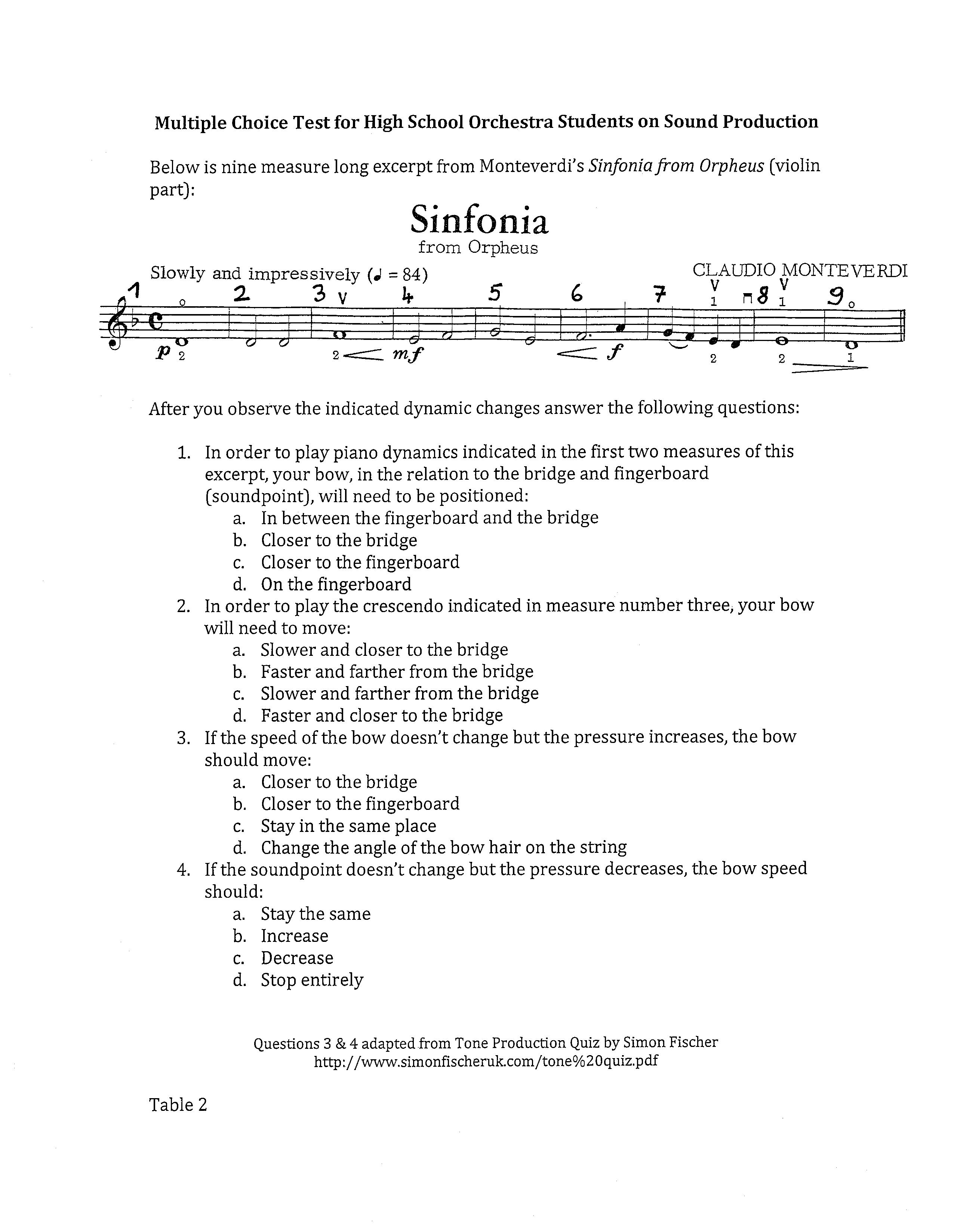
Table 2
Changing Lives One Note at a Time
Many reasons exist for the inclusion of music in our schools and an informed administrator recognizes the benefits music education provides children. Therefore, music education should not need more advocacy arguments. Yet, stories surface annually regarding the elimination of music programs, especially in our elementary schools. Perhaps teachers can consider an “alternative angle” for maintaining school music programs.
Many years ago, a superintendent was honored for his consistent support of music in the school district. During his acceptance speech, he discussed many reasons for having strong music programs. One emphatic and shocking statement he made was that involvement in music helps keep students from becoming pregnant! In other words, he supported music education because students were so involved in music activities after school they didn’t have opportunities to get into trouble. As appalling, or tactless, as it may sound, there exists a kernel of truth worth exploring in his comments.
Dr. José Antonio Abreu developed an instrumental program in Venezuela called “El Sistema.” The program’s accolades are well documented. Since 1975, hundreds of thousands of Venezuelan children have studied classical music through choral and instrumental instruction. The program’s “crown jewel” is their national youth orchestra. This ensemble, as a youth orchestra, travels internationally and astounds audiences in major concert halls with their level of proficiency and professionalism. Gustavo Dudamel—a prodigy of El Sistema—now conducts the Los Angeles Philharmonic and, as one of the brightest young conductors of our day, has energized the classical world.
Dr. Abreu, when asked about his vision in teaching classical music to Venezuelan children, doesn’t discuss extensively the mental or developmental benefits of learning an instrument. He does mention aesthetic education, but always emphasizes music’s role as a vehicle for social change. Much of Venezuela’s population lives in extreme poverty, and El Sistema is known for rescuing children from financial and social poverty. Winning a TED Talk prize, an award given to someone with an innovative idea that has made a global change, Dr. Abreu said, “Music has to be recognized as an…agent of social development in the highest sense, because it transmits the highest values - solidarity, harmony, mutual compassion. And it has the ability to unite an entire community, and to express sublime feelings” (Abreu 2009).
American classrooms also experience poverty. Certainly financial poverty exists, but increasingly America is becoming socially impoverished. Rosiak, in a Washington Times article, mentions the lack of fathers’ involvement in their children’s lives as one cause of social and economic poverty.
In every state, the portion of families where children have two parents,
Matthew H. Spieker Music Education Professor University of Arizona
rather than one, has dropped significantly over the past decade. Even as the country added 160,000 families with children, the number of twoparent households decreased by 1.2 million. Fifteen million U.S. children, or 1 in 3, live without a father, and nearly 5 million live without a mother. In 1960, just 11 percent of American children lived in homes without fathers (Rosiak, 2012). Socially this is disturbing, but single parenting often results in economic tragedy. “The [economic] spiral continues each year. Married couples with children have an average income of $80,000, compared with $24,000 for single mothers” (Rosiak, 2012).
Social media usage seems to result in negative repercussions on children, which also causes social poverty. As a teen’s use of social media increases, there can be a correlating sense of decreased contentment and increased depression (Rideout, 2010). Teens using social media are more narcissistic, antisocial, and aggressive, (Rosen, 2011). Social media has also developed a new form of bullying, labeled “Cyberbullying,” that has been the cause of some teen suicides (Hinduja & Patchin 2010). Temple and colleagues (2013) found nearly 28% of teenagers between the ages of fourteen and nineteen send nude pictures of themselves, called “sexting,” through cell phones or email. Of those teens, 31% had requested a sext and 57% had been asked for a sext (Temple, et al. 2013).
Poverty is tragic and diminishes a person’s sense of self-esteem. Dr. Abreu, during his TED talk, paraphrases Mother Teresa by saying, “the most miserable and tragic thing about poverty is not the lack of food or roof, but the feeling of being no-one, the feeling of not being anyone, the lack of identification, the lack of public esteem” (Abreu 2009).
Although possibly helpful, administrators do not need to be presented with research studies. Principals experience them daily and are aware of these types of issues and others within their schools. What administrators need are real answers to real problems. They recognize daily the issues, but remain hungry for opportunities and programs that will develop better school environments. Districts often spend thousands of dollars for consultants to assist in improving a school’s image and to help students develop a positive identity. Schools are increasingly aware of the importance of improving their school’s spirit and pride, because with this, everything else improves.
In many ways, each school could be considered a type of Venezuelan country and each music teacher could consider himself or herself a
Continued on page 32
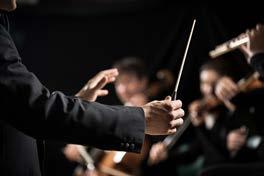
Oregon Music Education Association | PO Box 1235, La Grande, OR 97850 | 541-962-6262 | oregonmusic.org 31
Changing Lives One Note at a Time continued...
type of Dr. Abreu—one who desires to see positive social change in their school through strong music programs. Music teachers, to be considered a vital school component, need to contemplate and compile convincing arguments for their administrators--rationales as to how music can create a positive atmosphere and social engineering. As Dr. Abreu says, “Poverty generates anonymity…. An orchestra means joy, motivation, teamwork, success. Music creates happiness and hope in a community” (Tunstall 2012, p. 38). Participation in a music ensemble accomplishes this because “To sing and to play together means to intimately coexist…Music is immensely important in the awakening of sensibility and in the forging of values” (Tunstall 2012, p. 38).
Can music really awaken sensibility and forge values in a community such as a school? Through recent studies, researchers suggest that indeed it can. Being a music ensemble member can create an immense sense of belonging (Bartolome, 2013) and contribute to better attendance and lower drop out rates (Catterall, Chapleau, & Iwanaga, 1999; Eason and Johnson, 2013). Music students also have a better sense of connectivity to their academics (Brown & Evans, 2002) and have higher GPAs and graduation rates (Eason and Johnson, 2013).
Discipline rates remain lower within music student populations, and students noted that “music classes provided them with a sense of belonging, and a place where they could feel confident and at peace within their school environments” (Eason and Johnson, 2013, p. 29).

A must read for every music teacher is Suzuki’s book, Nurtured by Love (2009). The book isn’t so much about the technical aspects of his “Talent Education” method as about his unwavering belief that all children should learn music because it is through musical training that children learn the real essence of art, which is becoming a fine person.
The real essence of art turned out to be not something high up and far off. It was right inside my ordinary daily self. The very way one greets people and expresses oneself is art. If a musician wants to become a fine artist, he must first become a finer person. If he does this, his worth will appear. It will appear in everything he does, even in what he writes. Art is not in some far-off place. A work of art is expression of a man’s whole personality, sensibility, and ability (Suzuki, 2009, p. 82).
Principals and parents want students to become “finer” people. Our schools need to cultivate a feeling of belonging and community inside its walls. To accomplish this, our children need successful and positive experiences in music, and it is the music teacher’s job to give the gift of life-long music making and appreciation to students. Administrators need to support and use our music programs to fight our culture’s poverty—economically and culturally—and recognize music education’s important role within that fight. Part of the role of music in our schools is to change lives one note at a time. Here is a final thought from Dr. Abreu that you must share with administrators.
That is why the child’s development in the orchestra and the choir provides him with a noble identity and makes him a role model for his family and community. It makes him a better student at school because it inspires in him a sense of responsibility, perseverance and punctuality that will greatly help him at school (Abreu, 2009).

32 Oregon O R E G O N ∙ M U S I C ∙ E D U C A T O R ∙ F A L L ∙ 2 0 1 5
We invite you to explore the premier educational institution of music and dance in the Pacific Northwest. The University of Oregon offers a large full-time, in-residence music faculty, modern rehearsal and performance venues, and 40 performing ensembles.



TO VISIT SOMDAdmit@uoregon.edu | 541-346-5268 music.uoregon.edu
CHORAL
Dr. Steven Zielke, Director of Choral Studies, Chamber Choir
Dr. Sandra Babb, Bella Voce
Dr. Marc Callahan, baritone, OSU Opera Workshop, voice
Dr. Nicholas Larson, tenor, voice, Latin/Italian Diction
John Baker, North Clackamas Community Choir
Russ Christensen, OSU Meistersingers
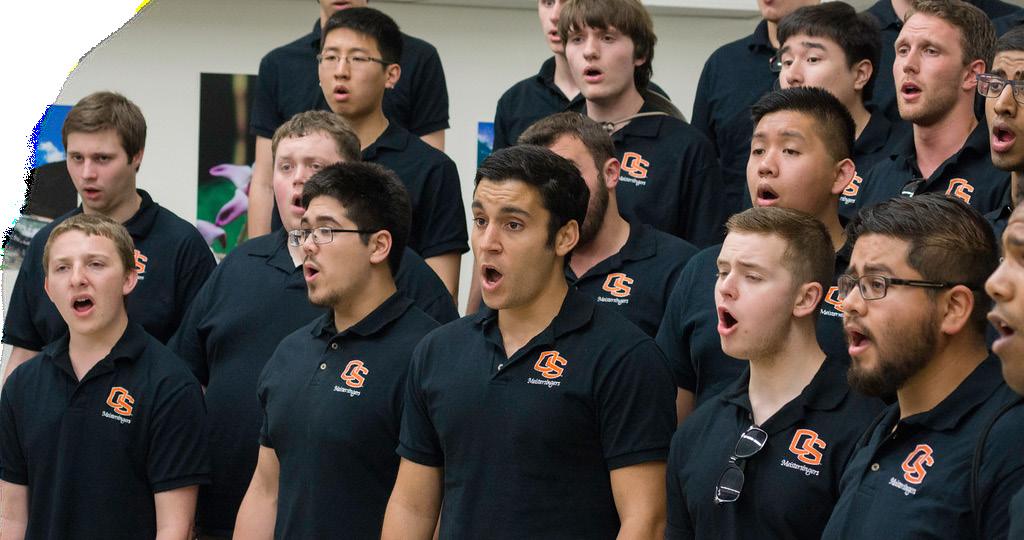
James Davidson, Coro Misto
Nicola Nine-Zielke, mezzo, voice, German Diction
Megan Sand, mezzo, voice, Latin/French Diction
February
February 20, 2016
PIANO FACULTY
Dr. Rachelle McCabe, Director of Piano Studies, performance, pedagogy, repertoire
Dr. Matthew Goodrich, performance, Alexander Technique courses
Dr. David Servias, group piano, performance, jazz
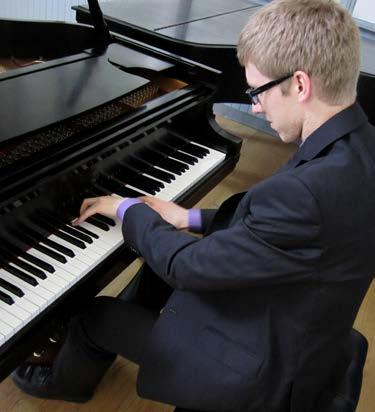
Vocal
Rebecca Jeffers, group piano
Lauren Servias, accompanying
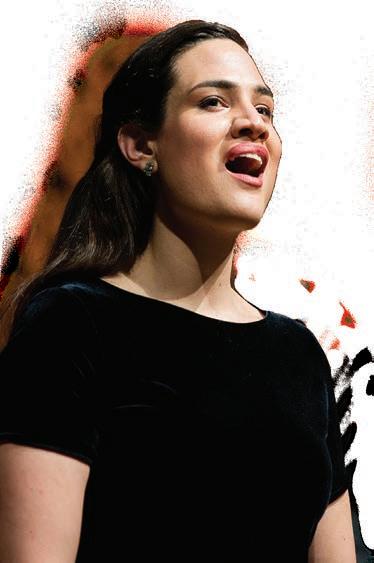
Oregon State University is an equal opportunity, affirmative action institution committed to cultural diversity and compliance with the Americans with Disabilities Act.
OF STUDY
Education
Music Education
Performance
Performance
PROGRAMS
Music
Graduate Studies in
Instrumental
Piano
Performance
Technology Music 101 Benton Hall Corvallis OR 97331 liberalarts.oregonstate.edu/music
Scholarship Auditions
Music
Music Scholarships 2016-2017 Music
17, 2016
Grant High School, Portland
Benton Hall, OSU, Corvallis
and VOCAL FACULTY
OLLEGE OF LIBERAL ARTS SCHO OL OF ARTS AND COMMUNICATION Oregon
Association P.O. Box 1235 La Grande, OR 97850
C
Music Education
 Oregon Music Education Association
Oregon Music Education Association





























































